|
With snow in the forecast for many of us, it’s time to light a fire, prepare a hearty meal, and open a bottle of wine. So here are three palate-pleasing red wines to sip by the fire or enjoy with a meal. And if you’re basking in balmy weather. I’ve included a fresh and sassy white wine! But, of course, all four wines are great to drink any time of year! Abate Lugana DOC 2021 Lugana DOC is a small denomination located on the southern banks of Lake Garda, which crosses over both the Lombardy and Veneto regions in northern Italy. Lugana is renowned for its white wines and distinctive morainic terroir of penetrating humid clay soils and rich minerals deposited by the glacial moraines of thousands of years ago. The wines are naturally high in acidity with characteristic aromas of white flowers and citrus. Trebbiano (Turbiana) is this region’s signature white grape. The Abate family has been growing grapes here since 1920, but it wasn’t until generations later that they produced their first wine. Abate Wine was founded in 2018 and is owned by Sergio Abate. This wine is 100% Turbiana. Nose: Floral, peach, apple, citrus, and minerality. Palate: White stone fruit, vibrant acidity, and minerality driven. Notes of lemon, a hint of herbs, and a creamy mouthfeel. Alcohol: 13% SRP: $10 Pairing suggestions: Enjoy as an aperitif, or serve with seafood, light appetizers, mushroom risotto, and salads. Casalforte Valpolicella Superiore DOC 2020 Riondo Winery, founded in 2008, is an offshoot of the cooperative consortium Collis Veneto Wine Group. Valpolicella is east of Lake Garda, situated in the province of Verona. Valpolicella produces the famous grape varieties Corvina, Rondinella, and Oseleta, and it is considered the most famous red wine area in Veneto. Valpolicella was given DOC status in the 1960s. Many styles are produced here, such as Classico, Superiore, Amarone, and Ripasso, and range from light and easy-drinking to powerful and complex wines. This wine is a blend of Corvina, Rondinella, Corvinone, and other grapes. It has been aged partly in stainless steel and partly in wood casks for 12 months. Nose: Fragrant aromas of cherry, plum, baking spice, herbs, and hints of yeast. Palate: Rich and silky with cherry, blueberry, anise, vanilla, smooth tannins, and a long finish. Alcohol: 13% SRP: $15.99 Pairing suggestions: Grilled or roasted meat, game, creamy pasta, seared tuna, or aged cheese. Talosa Nobile Di Montepulciano Riserva DOCG 2017 Talosa is a boutique winery with 33 hectares located in the heart of Montepulciano in Tuscany and is owned by the Jacorossi family since 1972. Their historic aging cellar dates back to the 16th century. It is in the old town center of Montepulciano, in an underground area between two of the oldest buildings in the city, Palazzo Tarugi and Palazzo Sinatti. The brick passageways contain a series of vaults and niches where the barrels are placed. In 1980 Vino Nobile became one of the first four appellations given superior status of DOCG, along with Barolo, Brunello di Montalcino, and Barbaresco. This wine is 100% Sangiovese. After carefully selecting grapes, the fermentation time is about 20-25 days at controlled temperatures in stainless steel. The maturation is for three years in new oak tonneaux and 2nd passage, big barrels, and stainless steel. The finished wine continues to age in bottle for at least six months before release. It has an aging potential of over 15 years. Nose: Rose petals, berries, cherry, baking spice, and earthy. Palate: Concentrated flavors of dark berries, plum, cherry, and spice. Silky tannins, nice acidity, and understated minerality. Elegant, bold, and structured with a long finish. Alcohol: 14.5% SRP: $38 Pairing suggestions: Beef, game, hearty stews, pasta, or vegetable pizza. Cuslanus Amarone della Valpolicella DOCG Classico Riserva 2015 Albino Armani Winery has been making wine since 1607. Today, the family project boasts five privately owned estates composed of 330 hectares of vineyards. The family vineyards are in three major Italian wine-growing regions: Veneto, Trentino, and Friuli-Venezia Giulia. Albino has a strong bond with the land and says, “Sustainability = Viticulture and Social Responsibility.” All of the Albino Armani vineyards since 2019 have been given the SQNPI certification. This national certification aims to help agricultural ecosystems monitor and reduce environmental impact, reducing the use of synthetic chemicals and rationalizing all agronomic practices such as fertilization and irrigation. This wine is a blend of Corvina, Corvinone, and Rondinella. The grapes are sourced from vineyards in the high hills of the Valpolicella Classico production area at 500 meters. After a careful selection in the vineyard, the grapes are put in trays and left to dry in a drying loft called “fruttaio,” located next to the winery. This “appassimento” process is very slow in order to support the concentration of sugar, structure, and aromas. In the first months of the year following the harvest, the grapes are gently pressed, and then a long and slow fermentation in contact with the skins takes place. After this, the wine is aged for a long time in big barrels and tonneaux until bottling. It is then released to the market after at least four years. Nose: Lovely aromas of dark cherry, berries, spice, and a hint of earth.
Palate: Fine ripe fruit with cherry, red and dark berries, fennel, sweet spice, chocolate, and fine-grained tannins. An elegant and seductive wine. Alcohol: 15.5% SRP: $59.99 Pairing suggestions: Brisket, game, pasta, vegetable stew, truffle risotto, or sip and enjoy on its own. I hope these wines have piqued your interest. I’m ready to cozy up to a roaring fire with a glass of wine and a hearty stew! Until next time… Cheers! Penina To leave a comment or if you have an inquiry, please contact me at [email protected] Beginning with October and every month to follow, I will feature one wine and a pairing suggestion and recipe from the wine producer or winemaker. To get the ball rolling, I have two winners this month, both from Italy. San Felice Il Grigio Chianti Classico Gran Selezione DOCG 2017 San Felice estate is located in the heart of Chianti Classico in the commune of Castelnuovo Beradenga. With over 140 hectares of vineyards, 80% is devoted to Sangiovese, which is at the heart of their production. Their presence extends to the prestigious terroirs of Montalcino and Bolgheri as well. This wine is made with 80% Sangiovese, sourced from the estate’s top vineyards. The other 20% is a blend of native Tuscan varieties such as Abrusco, Pugnitello, Malvasia Nera, Ciliegiolo, and Mazzese. The wine is aged 24 months, 50% in large 60-100-hectoliter Slavonian oak casks and 50% in 225- and 500-liter French oak barriques. It is then aged in bottle for eight months. Nose: Floral, juicy fruit, sour cherries, smoky wood, herbs, and spice. Palate: A beautiful and expressive wine with notes of plum, dark berries, and spice fused with elegance and subtlety and balanced with lush tannins and acidity. Hints of vanilla and sour cherry linger on a long finish. Alcohol: 13.5% SRP: $38.99 Pairing Suggestions: Wild game, grilled meat, aged cheese, pasta, truffle risotto, or sip with a chocolate dessert. Winemaker Leonardo Bellaccini suggests the following recipe to pair with the wine, prepared by Borgo San Felice Executive Chef Juan Quintero. MACARONI, BEURRE NOISETTE, MUSSELS, LAMB AND ANISE Time: 20 minutes Ingredients for four servings: Sauce 100g (3.5 oz) unsalted butter (for the beurre noisette or brown butter) 120g (4.2 oz) cleaned mussels (without the shell) 100ml (3.38 fl oz) of white wine 4 garlic cloves 2 tablespoons of anise seeds 100 ml (3.38 fl oz) of mussel water Garnish 160g (5.6 oz) Fatless lamb meat (loin) 2 Nori seaweed sheets 50ml (1.6 fl oz) olive oil Black pepper 300g (10.5 oz) High Quality “maccheroncini” (pasta) Preparation Open the mussels in a pan with white wine, garlic, and parsley. Cover, and after a couple of minutes, they will be open. Turn off the heat and remove the shell of the mussels and strain its water, preserving it. Separately melt the butter and let it cook until it turns brown; add the mussel water so the butter doesn’t get burned. Add the anise and the mussels, and turn off the heat. Blend until smooth. There is no need to add salt because the mussel water is salty enough. Cook the pasta in plenty of salted water, drain and then add to the cream of butter. For serving, chop the lamb meat like a classic tartare, then season with salt, oil, and pepper, and cover with nori seaweed. On the base of the plate, arrange the lamb with seaweed, and finally, serve the pasta on top. Donnafugata Floramundi Cerasuolo di Vittoria DOCG 2020 Donnafugata has five estates throughout Sicily, with one in Vittoria located in southeastern Sicily. It is in this special region where Cerasuolo di Vittoria DOCG is produced. It is considered one of the most noteworthy wines produced in Sicily and the only wine in Sicily with a DOCG status! The indigenous grapes Nero d’Avola and Frappato are the only varieties allowed in the blend. Nose: Intense floral aromas envelop the senses with notes of violet, cherry, red berries, and spice that segue onto the palate. Palate: This is a fresh and juicy wine with personality. Hints of rose, strawberry, and spice linger on the finish. Soft tannins and a crisp finish add to the entertainment. Alcohol: 13% SRP: $30 Pairing Suggestions: Mature cheese, risotto, seared tuna, and calamari. Donnafugata suggests pairing the following recipe with Floramundi. Swordfish with Citrus Fruit and Pistachios
Time: 20 minutes Difficulty: Intermediate Ingredients for four servings: 4 swordfish steaks, about 200 g (7 oz) each 1 bunch of wild fennel 2 cloves of garlic 1 chili pepper a handful of sultana raisins, another of pistachios orange juice and rind juice of one lemon 1 glass of white wine 0-type flour, butter Instructions Flour the swordfish steaks. In a slightly buttered pan, sauté the garlic and chili pepper. As soon as the garlic browns, remove it. Add the floured fish and sauté. Then add the white wine, sultana raisins, wild fennel, and minced orange peel. As soon as the wine evaporates, add the orange and lemon juice and a pinch of crushed pistachios. Cover and continue cooking; if necessary, add citrus juice. Serve with the reduced sauce and a handful of pistachios covering the fish, garnishing the platter with two orange slices. Enjoy! Cheers! Penina To leave a comment or if you have an inquiry, please contact me at [email protected] Summer has ended, but autumn brings its magic with mother nature’s dramatic foliage display, crisp “sweater” weather, and a season filled with apple picking, pumpkin carving, and grape harvests! With temperatures beginning to drop, I’m focusing on red wines a bit more. Of course, I’ll be drinking white and rosé wines all year long, but with cooler weather in the forecast, I predict red wines paired with stews and hearty soups will start to replace lighter fare. And who can resist sipping a lovely Pinot Noir, Tempranillo, Cabernet Sauvignon, Cabernet Franc, Carménère, or a Sangiovese from Chianti Classico? It’s a perfect way to welcome autumn. Here are seven palate-pleasing wines from Spain, California, Chile, Italy, and Oregon to pair with fall cuisine. Bodegas Montecillo Reserva Rioja 2013 Bodegas Montecillo is Rioja Spain’s third-oldest winery and the second oldest in Rioja Alta, dating back over 150 years. This wine is a blend of 90% Tempranillo, 8% Garnacha, and 2% Mazuelo. It was aged for two years in handcrafted oak barrels followed by 18 months in bottle. Nose: Juicy, red fruit, clove, herbs, and floral hints. Palate: Plum, cherry, baking spice, silky tannins, hints of cedar, and a touch of fennel on the finish. A fantastic wine for the price! Alcohol: 13.5% SRP: $15 Pairing suggestions: Charcuterie, stews, hearty soups, grilled or braised meats and game, or seared tuna. Cune Organic Rioja 2020 CVNE (pronounced coo-nay) is an acronym for Compania Vinicola del Norte des Espana, and it is one of Rioja’s most iconic and historic wine producers. Two brothers founded the winery in 1879, and within six years, they began receiving international awards for their wines. The current owners are direct descendants and represent the fifth generation. This wine is a blend of 60% Garnacha, 30% Tempranillo, and 10% Graciano. It is aged for six months in oak barrels. Nose: Floral, wild berries, herbs, and spice Palate: Juicy and fresh with aromas carrying through to the palate with cherry, anise, and spice notes. Delicious! Alcohol: 13.5% SRP: $17 Pairing suggestions: Cheese platter, meats, pasta, risotto, or stews. Josh Cellars Lodi Reserve Cabernet Sauvignon 2020 Joseph Carr formed his own wine company in Napa Valley after spending a decade as a world-class sommelier and another decade as a wine industry executive. His dream was to have a family-owned winery, so in 2005 he began making wines under the label ‘Joseph Carr.” In 2007 Carr launched Josh Cellars as a tribute to his dad, Josh, who inspired and influenced the man Carr is today. “Every bottle of Josh Cellars wine produced honors and acknowledges his father.” In honor of his father, a volunteer firefighter in upstate NY, Carr created the “Lodi Cabernet Sauvignon” as a tribute. The winery donates $1 for every bottle of the Lodi Cab sold to either the National Volunteer Firefighter Council or local firefighter charities nationwide. Nose: Dark cherry, berries, spice, and chocolate Palate: Dark berries mingle with cherry, plum, espresso, and baking spice- firm tannins and beautifully structured with a long finish. Alcohol: 14% SRP: $21.99 Pairing suggestions: Grilled meat, game, mushroom risotto, hearty soups, stews, or pumpkin chili. Viña Maquis Gran Reserva Cabernet Franc 2018 The Hurtado family, owns the Maquis estate, now in its fourth generation. Practicing sustainability, the grapes for this wine are sourced from vineyards in Colchagua Valley, Chile, where the winery is located. The blend for this wine is 90% Cabernet Franc, 7% Carménère, and 3% Petit Verdot. It is aged for 12 months in French oak barrels. Nose: Red berries, floral notes, baking spice, and a bit earthy. Palate: Lush fruit with strawberry plum, cherry, herbs, and spice. Complex and rich, but not overpowering. Alcohol: 14% SRP: $24 Pairing suggestions: Barbecued ribs, seared tuna, spicy Asian cuisine, grilled or braised meat, stew., or glazed breast of duck. TerraNoble CA1 Andes 2018 TerraNoble, founded in 1993, is located in the Maule Valley of Chile. TerraNoble initially presented itself as a boutique winery specializing in Merlot. However, in 1994 Chilean Merlot was identified as Carménère, So, TerraNoble committed to this rediscovered variety. And since then, they have extended viticultural experimentation and innovative winemaking practices to the Colchagua and Casablanca valleys. The grapes for this 100% Carménère are handpicked from their best vineyard plots in the Colchagua Valley at the foot of the Andes. 70% of the wine was aged in new and previously used 300-L French oak barrels, and 30% in untoasted foudre for 12 months. It was then further aged for six months in bottle. Nose: Lush dark fruit, spice, earth, dark coffee beans, and herbs. Palate: Dark berries, herbs, and spice blend with silky tannins that are nicely balanced with acidity. The finish is long, with dark chocolate, espresso, and a hint of herbs lingering. Alcohol: 14.5% SRP: $24.99 Pairing suggestions: TerraNoble suggests thick ribs, oven-roasted beef brisket, risotto, or seasoned foods. Querciabella Chianti Classico DOCG 2018 Querciabella was founded in 1974 with a commitment to quality, sustainability, and authenticity. Querciabella has continually sharpened its approach to biodynamic viticulture for over a decade. With vineyards throughout Tuscany’s Chianti Classico and Maremma areas, Querciabella exemplifies the respectful preservation of tradition through forward-thinking, albeit completely natural winemaking. This 100% Sangiovese wine is vegan. No animal products or byproducts are used in the production of this wine. It is aged for 12 months in fine to extra fine-grained oak barriques (225L) and tonneaux (500L) which 10% is new. Nose: Floral, red cherry, red berries, baking spice, and a slight hint of licorice. Palate: This is a fine and silky wine that is fresh, juicy, vibrant, and elegant. Aromas segue onto the palate with hints of chocolate, plum, and sour cherry on the finish. Alcohol: 14.5% SRP: $33 Pairing suggestions: Classic Tuscan dishes, seared tuna, mushroom risotto, salmon burgers, or Asian cuisine. J. Christopher Volcanique Pinot Noir 2018 J. Christopher Winery is a small winery in northern Willamette Valley, Oregon, owned by well-known winemaker Erni Loosen, creator and owner of Germany’s Dr. Loosen and Villa Wolf estates. Following his passion for Pinot Noir, Erni set his sites on J. Christopher, eventually purchasing 40 acres and planting the Appassionata Vineyard. Ernie and his team are proactive when it comes to sustainability. Maintaining healthy soil and vines is a priority. The grapes for this 100% Pinot Noir cuvée are sourced from vineyards in Dundee Hills with volcanic soil. The wine is aged 18 months in barriques (25% new), with no fining or filtration. Nose: Floral, cherry, red berries, cranberry, baking spice, and minerality.
Palate: Fresh, juicy, and elegant, with aromas spilling onto the palate along with notes of raspberry, pomegranate, and hints of oak and spice. Fine tannins and a silky mouthfeel add to this dry and savory wine. Alcohol: 13.5% SRP: $40 Pairing suggestions: Grilled meat, barbecued chicken, veal marsala, casseroles, stews, or pizza. Enjoy and happy autumn! Until next time… Cheers! Penina To leave a comment or if you have an inquiry, please contact me at [email protected] Many tend to drift toward white or rosé wines as the temps begin to climb. However, red wines should not be overlooked during the summer months. Many light-bodied to full-bodied reds are ideal for sipping outdoors while enjoying grilled fare. For instance, unoaked or lightly oaked red wines tend to be lighter and fruitier. And slightly chilling many red wines for no more than 30 minutes can enhance the flavors, minimize the focus on alcohol, and make the wine more refreshing. I recommend staying below 14% in alcohol content when choosing a wine to drink outside on a hot day. Alcohol is a diuretic that contributes to dehydration. And when combined with outside heat, which leads to sweating, one can become dehydrated quickly. Therefore, it is also essential to drink water and stay hydrated! I have chosen five red wines that range from 12.5% to 13.5% alcohol and can be enjoyed with whatever is sizzling on the grill. These wines pair beautifully with grilled red and white meats, game, fowl, tuna, and veggies. And if it’s too hot outside, bring your picnic and wine indoors, and sip away! Trapiche Oak Cask Wines Trapiche Winery is located in Mendoza, Argentina. Grapes for this collection are sourced from vineyards situated 2500 ft above sea level. The wines are aged for nine months in oak barrels. Trapiche Oak Cask Cabernet Sauvignon 2021 This wine is 100% Cabernet Sauvignon. Nose: Dark berries, cherries, and spice. Palate: Ripe blackberry, plum, spice, chocolate, and toasty notes with smooth tannins. Nice finish with a hint of tobacco lingering. Alcohol: 13.5% SRP: $8.99 Trapiche Oak Cask Malbec 2021 This is 100% Malbec wine. Nose: Dark cherry, plum, spice, and vanilla. Palate: Ripe dark berries spill onto the palate with a creamy mouthfeel and notes of pepper on a sweet finish. Alcohol: 13.5% SRP: $8.99 Saget La Perrière Saget La Perrière is a family-run company located in the Loire Valley, France. With 890 acres of vines in the finest appellations and six estates, it carries on the tradition of nine generations dedicated to producing the best wines. La Petite Perrière Pinot Noir 2020 This 100% Pinot Noir is mainly sourced from the Saget family’s estate vineyards in Touraine (Loire Valley), and part of the blend is sourced from the South of France through long-term partners. Nose: Cherry, floral, earthy Palate: Blueberry, dark plum, cherry, and balanced acidity with a fruity and long finish. Alcohol: 12.5% SRP: $13.99 San Felice San Felice estate is located in the heart of Chianti Classico territory in Tuscany, Italy. The estate covers an area of more than 650 hectares in the municipality of Castelnuovo Berardenga, at an altitude of about 400 meters above sea level. Over 140 hectares are devoted to wine vineyards, with about 17,000 olive trees, experimental plantations, and a hotel complex. San Felice Il Grigio Chianti Classico Riserva DOCG 2018 Grapes for this 100% Sangiovese are sourced from the San Felice estate. 80% of the wine is aged for 24 months in 60 or 90 hectoliters in Slavonian oak casks, and 20% is aged in 225-liter French barriques, followed by nine months or so in the bottle. Nose: Floral, red berries, dark cherry, and earth. Palate: Fresh red fruit spills onto the palate with spice, floral, a hint of herbs, and a lovely balance of acidity and smooth tannins. Alcohol: 13.5% SRP: $27 J. Christopher Winery This winery is located in northern Willamette Valley, Oregon, and is owned by well-known winemaker Erni Loosen, creator and owner of Germany’s Dr. Loosen and Villa Wolf estates. Following his passion for Pinot Noir, Erni set his sites on J. Christopher, eventually purchasing 40 acres and planting the Appassionata Vineyard. J. Christopher Medici Vineyard Pinot Noir 2018 The grapes for this 100% Pinot Noir are sourced from one of the oldest vineyards in the Chehalem Mountains appellation, and it is just a few miles east of the winery. The oldest blocks were planted in 1976, and in 2015 the vineyards were converted to organic farming. This wine was aged 18 months in barriques (25% new) and is unfiltered. Nose: Strawberry, floral, stone, and a trace of baking spice. Palate: Succulent red berries, cherry, vibrant minerality, and spice. Smooth and well structured with a long finish. Alcohol: 13.5% SRP: $60 In addition to the above wines, Grenache, Cabernet Franc, and Gamay make excellent grilling partners. Until next time…
Cheers! Penina To leave a comment or if you have an inquiry, please contact me at [email protected] Gently rolling hills dominate the landscape of Tuscany, famous for its medieval towns, wine vineyards, striking cathedrals, and the birthplace of renowned artists such as Michelangelo, Botticelli, and Leonardo da Vinci. Amongst this beauty and history lies Montalcino, home to one of Italy’s most renowned wines, Brunello Di Montalcino. The village of Montalcino sits high up on a hill with vineyards sloping down into the valley. Montalcino is a small wine region comprised of 60,000 acres of olive groves, forests, and farmland, of which 3500 acres are devoted to wine vineyards. There are roughly 250 wineries here that produce Brunello di Montalcino. Brunello di Montalcino was awarded the first-ever DOCG designation (Denomination of Controlled and Guaranteed Origin) in 1980, and it is considered one of Italy’s most famous and distinguished wines. DOCG is the highest designation given under the Italian wine law. Brunello di Montalcino is made exclusively from the Sangiovese grape, (named ‘Brunello’ in Montalcino). The skin of the Sangiovese grape is thick and tends to deliver fruit-forward wine with bright acidity and high tannins. Of course, climate, soil, and production play a big part in the wine’s outcome. The climate in Montalcino is warm and dry, typical Mediterranean weather. Vineyards are planted up to 500 meters in elevation, with north-facing slopes experiencing a cooler microclimate and more winds. In contrast, the southern and western facing slopes are exposed to extreme sunlight and maritime breezes. The vines are planted in various soils such as limestone, clay, schist, volcanic soil, and galestro, which is schistous clay soil commonly found in most of Tuscany’s best vineyards. All of these elements contribute to the difference in quality, complexity, and character of the wine. Nestled amongst the hills in a setting worthy of a painting sits one of the original estates of Montalcino, Col D’Orcia, with a winemaking history that dates back to the 1700s. The estate’s name translates to “the hill overlooking the Orcia River” due to its position between the undulating hills of the Orcia River and Sant’Angelo in Colle. The estate was sold to the Cinzano family in 1973. The estate only had a few hectares of vineyards at the time of purchase. Count Francesco Marone Cinzano, who now owns and manages the estate, took over Col D’Orcia in 1992. He increased his father’s plantings from 70 hectares to 150+ hectares today. And 108 of those hectares are dedicated to Sangiovese. In 2010 they began the process of converting their vineyards to organic. By 2013 all wines were certified organic. And today, it is the largest certified organic vineyard in Tuscany and the third-largest owner of Brunello vineyards in Montalcino. The Count’s mission is to produce quality wines from these hills. He said, “Quality is the result of healthy fruit. We are not just winemakers; we are farmers. We grow grapes and practice biodiversity.” He pays his respect to mother nature and is always searching for excellence. His motivation to become organic was “not to change practices, but change the mindset of people by using a homeopathic and holistic approach; that is the greatest challenge to becoming organic. And the beauty of protecting this special environment is to pass it on to future generations.” As mentioned above, Brunello di Montalcino is made exclusively from the Sangiovese grape. DOCG Regulations require that Brunello di Montalcino age for a minimum of two years in oak wooden barrels and at least four months in bottle before release. The Riserva wine must age at least six months in bottle and is released a year later onto the market. And, the wine can only be bottled in the location where it is produced. I had the opportunity to taste the following wines with Count Cinzano. In addition to the five-star vintages of Brunello Di Montalcino, he included a bottle of Cabernet Sauvignon, another great vintage. All three wines are produced entirely with organically grown grapes farmed on the Col d’Orcia estate and bottled on location. Brunello Di Montalcino DOCG 2016 This is a blend of all the Sangiovese vineyards on the estate. The wine is aged three years in 25, 50, and 75 hl. Slavonian and French oak casks and a minimum of one year in bottle before release. (hl is a hectolitre and equal to 100 liters,) Nose: Floral, herbs, ripe red fruit, berries, and cherry notes. Palate: Lush red fruit with cherry, plum, spice, herbs, and licorice. Medium tannins with fresh acidity and a long finish. Alcohol: 14.5% SRP: $59.99 Poggio Al Vento Brunello Di Montalcino Riserva DOCG 2013 The grapes for this wine are sourced from a single vineyard planted in 1974 comprised of seven hectares called Poggio al Vento, which means “windy hill.” The vines are influenced by the sea winds and the special soils of marl and limestone. This wine is only produced in the best vintages and is the icon of the estate. The Count said that the 2013 vintage was small but exceptional. The wine was aged for three years in 25 and 75hl in Slavonian and French oak barrels and for three years refinement in bottle. Nose: Beautiful berry notes with spice, earth, and dark chocolate. Palate: Complex and well-structured with rich fruit, herbs, anise, and edgy tannins. The Count said, “The next ten years will show softness of tannins.” Alcohol: 14.5% SRP: $162.00 Olmaia Cabernet Sauvignon Sant’Antimo DOC 2015 The grapes for this 100% Cabernet Sauvignon come from a single vineyard, Olmaia, planted in 2005. The Count’s father originally planted Cabernet Sauvignon in 1984 on the hills of Montalcino, and the first harvest was in 1989. Sadly, his father passed away before the first vintage was produced. The Count remarked, “This wine expresses how special Montalcino is.” The wine is aged 18 months in new French oak barriques and a small portion in American barrels, then another eight months in bottle. Nose: Dark fruit, herbs, spice.
Palate: Rich and decadent with blackberries, black cherry, plum, herbs, spice, and chewy tannins (that will soften with aging.) A long and beautiful finish with notes of vanilla lingering. Alcohol: 14.5% SRP: $68.99 Count Cinzano said, “These are wines made to serve with food. It is the concept of drinkability and enjoying wines with food.” Here are some food pairing suggestions for the above wines: Aged cheese, meat dishes, stews, game, tomato-based pasta, grilled veggies, grilled portobello mushrooms, risotto with truffles, and dark chocolate for dessert. Until next time… Cheers and Buon appetito! Penina This article was originally published on Santé Magazine To leave a comment or if you have an inquiry, please contact me at [email protected] One doesn’t need to be in Tuscany to savor Tuscan wines and indulge in the creative cuisine of this beautiful region. Just follow the directions below to create a touch of Tuscany, and you’ll be swirling, sipping, and eating in no time! Chianti Classico DOCG appellation is located in the heart of Tuscany and is the most esteemed and ancient area in the Chianti winemaking zone. Tenute Piccini/Piccini1882 is a Tuscan winery owned by the Piccini family, who have worked in the Chianti Classico area since 1882. Mario Piccini is the CEO and fourth generation of the family. What began with seven hectares in Chianti Classico has now expanded to five estates here, in addition to acquired vineyards in Basilicata and Sicily. Today’s focus is on three Chianti Classico DOCG wines produced from the Fattoria di Valiano estate located in the heart of the Chianti Classico production area in Castelnuovo Beradenga, and home to the Piccini family. Piccini has 200 hectares of land here, of which 75 hectares are vineyards. They are all cultivated organically and certified as such from the 2018 harvest. The soils are mostly clay and stone, with the exception of the Poggio Teo cru, which is sand and stone. These three wines are an authentic expression of the grapes and terroir of Chianti Classico. And they evoke the passion and love that the Piccini family pours into each bottle. “Everything I do is driven by an irrational desire to relive that moment and to share with others the joy and wonder that a glass of perfection can provoke.”—Mario Piccini Valiano Poggio Teo Chianti Classico DOCG 2019 This wine is 90% Sangiovese and 10% Merlot. Grapes are sourced from the Poggio Teo cru that sits about 350 m above sea level. The wine ages for three months in barriques, nine months in large oak barrels, and three months in bottle. Nose: Soft floral, cherry, and spice Palate: Generous and fresh with red berry and cherry notes, plum, spice, and a touch of herbs. Tannins and acidity are beautifully integrated. Alcohol: 13.5% SRP: $28 Pairings: Aged cheese, roasts, stews, risotto Valiano Poggio Teo Riserva Chianti Classico DOCG 2018 The grapes for this 100% Sangiovese are sourced from the Poggio Teo cru that sits about 350 m above sea level. This is the only vineyard in Valiano characterized by a sandy texture with a good presence of sandstone. Aging takes place in large French oak barrels for 18 months and 12 months in bottle. Nose: Dark berries, cherry, herbs, and a hint of baking spice. Palate: Aromas segue onto the palate with notes of minerality and a lovely balance of sweet and savory. Alcohol: 15% SRP: $26 Pairings: Grilled meat, game, hearty stews, pasta, aged cheese. Valiano 6.38 Gran Selezione Chianti Classico DOCG 2018 This is a blend of 90% Sangiovese, 7% Cabernet Sauvignon, and 3% Merlot. Grapes are sourced from vines planted in 1998. Wine is aged 18 months in 10-20 hl French oak barrels for the Sangiovese, 18 months in barriques for the Cabernet and Merlot, and six months in bottle. Nose: Violets, plum, dark berries, cherry, and sweet spice. Palate: Lush notes of juicy blackberries, plum, dark cherry, anise, and pepper, with smooth tannins and a long, intense finish of spice and dark fruit. Alcohol: 14% SRP: $25 Pairing: Aged cheese, truffle or mushroom risotto, meat, lamb, pasta with red sauce. Hopefully, I have aroused your curiosity with these wines, and you are now ready to pair them with some authentic Tuscan cuisine. Tuscan Women Cook: Nonnas. Memories. Recipes cookbook is a wealth of generational recipes put together by Coleen Kirnan with Rhonda Vilardo. The recipes were shared by the nonnas of the village of Montefollonico and neighboring towns. The book has over 50 delectable recipes along with photos, stories, and many tips. Here are two mouthwatering recipes. (The recipes and photos below are reprinted with permission from Tuscan Women Cook cookbook by Coleen Kirnan. Copyright www.TuscanWomenCook.com) Crespelle di Funghi (Mushroom Crepes) Carré di Agnello (Rack of Lamb) So, if traveling to Tuscany isn’t in the cards right now, then let your palate take a trip and enjoy some Tuscan wine and food without leaving home! Until next time… Cheers and Buon Appetito!
Penina Located amongst the rolling hills of Tuscany lies Montalcino, home to one of Italy’s most renowned wines, Brunello Di Montalcino. Made exclusively from the Sangiovese grape, this wine was awarded the first-ever DOCG designation (Denomination of Controlled and Guaranteed Origin) in 1980. It is the highest designation given under Italian wine law. With a history that dates back to the Etruscans, winemaking has always been part of the culture here, including a male-dominated industry burdened by discrimination and habit. However, female winery owners and winemakers have taken Montalcino by storm and transformed and turned the tides to make a place for women in the wine industry. Let me introduce you to three of these dynamic and revolutionary women of Brunello Di Montalcino, who I had the opportunity to chat with recently. DONATELLA CINELLI COLOMBINI With an estate and family history of winemaking dating back to the 16th century, owner Donatella Colombini created Casato Prime Donne in 1998. It is the first winery in Italy with an all-female staff, borne out of the desire and need to reduce discrimination and show that “muscle” is not the only ingredient required to produce wine. What circumstances led you to create an all-female staff? Donatella: To be truthful, it happened by chance. I am the descendant of a historic family of Brunello producers. My vineyards are on land that my ancestors began cultivating over 400 years ago. In 1998 I left the family estate to create a new project that included two properties that needed renovation: Casato in Montalcino and Fattoria del Colle in southern Chianti. To help me, my mother gave me some wine in a barrel to begin my own production of Brunello. I needed a cellar master to take care of my wines, so I called the nearest oenology school and asked for the name of a good student. They told me that they were all booked. When I called back and asked for a female student, the reply was, “We have many, as none of the good wineries want them.” I realized that discrimination was so widespread that it had become “normal,” so I decided to change the situation. From this incident came the idea of creating the “Prime Donne” Project and becoming the first winery in Italy to be staffed only by women. It demonstrates that the production of fine wines does not require muscles, just talent, and intelligence. Now we have three female winemakers, and we export to 39 nations around the world. The wine critics’ ratings are excellent, and sales are going very well. In the beginning, it was difficult, but we did it. Part of the Prime Donne project is also the Brunello Prime Donne chosen by a panel of four female wine tasters, the Prime Donne award (given to women who change the female model), and a hiking trail with quotes from the winners. You are a pioneer and inspiration to women. If you could tell the future generations of women winemakers one thing, what would it be? Donatella: I would tell them to have more courage and to learn something new every day of their life. Women are much better than they think they are, but they must have more faith in their talent. Often women renounce because they are scared of not succeeding. They renounce so they can dedicate time to the family. But this is a mistake; they will be better professionals, mothers, and wives if they accept the challenges life puts in their way. If they do not even try, then they have already lost. In the same way, it is wrong to search for professional success at any cost. “Those who go alone walk more quickly, but those who walk with others go much further,” says an old proverb to which I would like to add a phrase: Those who help others go forward will never be alone and will have given meaning to their life. GIOVANNA CIACCI Giovanna comes from a long line of winemakers with family roots that go back to 1850 when the family estate Tenuta di Sesta was founded. At that time, the family was immersed in cultivating grapes, olives, and grain. It wasn’t until 1966 that Giuseppe Ciacci bottled the estate’s first Brunello di Montalcino. In 1994 the original estate was divided among family members. Giovanna took her share of land and in 1995 created Tenuta di Collosorbo. Today, she and both of her daughters run the 30-hectare winery. Giovanna manages the general administration. Her daughter Laura works as both an oenologist and a viticulturist. Her other daughter Lucia is the agronomist and also responsible for marketing. Tell me about Tenuta di Collosorbo. Giovanna: Tenuta di Collosorbo comes from one of the oldest estates of Montalcino, owned by our family since 1850. After the death of Giuseppe Ciacci, his sons decided to split the estate. It was 1995, and I gave a new name to the estate, Tenuta di Collosorbo. I have always been focused on elegance, quality, and traditions. In 2008 my daughters Laura and Lucia started working full time at the estate, making it one of the first female estates in Montalcino. Many children that grow up in a family business tend to go off and do their “own thing”. Did your daughters always know that they wanted to be part of the family business? Giovanna: Laura and Lucia grew up surrounded by the taste and smell of the wine. When they were young, before university, they were torn between their roots, estate, passion, and family, and their desire to do something different with their powers. Lucia thought of becoming a doctor, and Laura wanted to become a veterinarian. But in the end, their passion for the estate, their roots, countryside, and wine won. And both of them decided to study for it. What challenges do you and your daughters face as women in this industry? Giovanna: The wine business has been mainly a male world until 15 years ago. In the beginning, it wasn’t easy to demonstrate our competence and our power, both inside and outside of the estate. But now, after 26 years, we are really proud of our job and of the teamwork that we have created inside Collosorbo. GIOVANNA NERI Col Di Lamo is an exclusive, all-female organic winery owned by Giovanna and her daughter, Diletta. It was founded in 1994 after her daughter was born. The estate covers an area of approximately 80 hectares. Giovanna inherited her passion for wine and winemaking skills from her father, who passed away in 1991. However, she took a detour before returning to her roots. Giovanna considers her wines “her creations” (children) and continually spreads her love and respect for the land and her products. It is a small production winery of quality and refinement. What inspired and motivated you to make this an all-female winery?
Giovanna: For me, it was a natural process. My company is my creation, which I wanted for myself, and for which I fought a lot in a world that was still very male chauvinist, especially the wine industry. I think I had to prove triple, compared to others, to make it clear that a woman, completely alone and starting from scratch, could create wines of the highest quality. When I tell my story, I always say that I consider my company another daughter of mine. I gave it a name; I dedicated all the commitment, love, and dedication I have to it, as with my daughter Diletta. Where did you do your training to become a winemaker? Giovanna: I graduated with honors in law and had embarked on a career as a lawyer. I felt, however, that this work, although gratifying, was not my way. So at the age of 40, I decided to drastically change my life and have a part of the family business (it’s not so obvious if you are a woman). So, without any particular skills and the help of anyone, I threw myself body and soul into this fantastic adventure. There have been very difficult times. The beginnings were really hard, I only had men around me, and no one believed I could do it. Luckily they are the same ones who now hold me in esteem. What is Diletta’s role in the company? Giovanna: Diletta helps me in communication. I believe that a young vision is essential in a world that runs more and more on the Internet, especially social networks. Tell me about some of your challenges with winemaking and the industry. Giovanna: I strongly believe in wine and organic products in general. I was among the first to choose this type of cultivation in Montalcino, not without criticism. But I am convinced that it is the future. I feel like a guest in this land, and I have chosen to do this job precisely because I love the planet, and I want to respect and enhance it as much as possible, even for future generations. All of these amazing women are members of Il Consorzio del Vino Brunello di Montalcino, founded in 1967. Its mission is to safeguard its product and accentuate the best qualities of Brunello wines. It is a free association comprised of 203 producers representing small and large wineries, including 22 producers outside the Consorzio. As part of Il Consorzio’s initiative, Finally Brunello will be taking place in New York from June 14th through June 20th. It is an excellent opportunity to taste Brunello wine from 56 wineries paired with food from 38 participating restaurants presenting a prix fixe menu. To learn more about this event, visit https://www.finallybrunello.com/ A note on the Feature Photo: The work of art depicted in this photo is called Points of View and is located on the hiking trail of the Prime Donne connected to Casato Prime Donne Award. Until then… Cheers! Penny This story was originally published on Santé Magazine. To leave a comment or if you have an inquiry, please contact me at [email protected] This story was originally published on Santé Magazine When one thinks of the Tuscany wine region, Chianti Classico (the heart of the Chianti zone), Brunello di Montalcino and Bolgheri DOC might come to mind. Known as Toscana to Italians, this beautiful wine region with its rolling hills, medieval castles, ancient roads, olive trees, and wine vineyards is renowned for its Sangiovese-based red wines. Almost two-thirds of the vineyards in Tuscany are planted with Sangiovese. This grape is high in tannins and acidity, and depending on where Sangiovese is grown and how it is vinified, the wine’s characteristics will ultimately reflect its origins. Tuscany is located in central Italy, stretching along the Tyrrhenian Sea coastline to the west, Liguria and Emilia-Romagna to the north, Umbria and Marche to the east, and Lazio to the South. Nestled between Montalcino and Scansano in the southern part of Tuscany is a hidden gem called Montecucco. The Etruscans in the sixth century B.C. cultivated vines and produced wine here. According to Consorzio Tutela Montecucco, “In the 1970s, the first two geographical appellations in our territory were officiated, considered forerunners of the Montecucco appellation; the Montecucco Denomination of Origins (DOC) was officiated in 1998.” In 2011, Montecucco Sangiovese was established as a separate DOCG. The newly appointed president of the Consorzio, Giovan Battista Basile, added “Sustainability, a key element in the DOC and DOCG where almost 70% of production is organic, will be the main asset of the consortium. Another important asset is the uniqueness of the Sangiovese grape, the “king” of the denomination, characterized by its high quality and distinctive personality. These are the strengths that will allow us to consolidate the positive trends recorded in the past years and further strengthen our presence, starting in Italy and extending to the global market.” The Montecucco Consortium, founded in 2000, represents 68 wine producers. They also represent over 500 hectares of vineyards out of 750/800 hectares, which produces more than 1.2 million bottles. The vineyards in Southern Tuscany are at lower altitudes than the rest of Tuscany, creating a warmer climate. Since Sangiovese grapes are late to ripen, this is an ideal location. Because of Montecucco’s proximity to the sea, the vineyards benefit from the cooling maritime breezes off the coastline, moderating the warm temperatures. This, in turn, produces healthy, fully ripe grapes. A few areas of clayey soil are present, but most of the territory consists of non-calcareous soils, which are very suitable for cultivating vines and olives. In addition to Sangiovese, the other principle red grape is Ciliegiolo. The principle white grape varieties are Grechetto, Vermentino, Malvasia and Trebbiano. The regulations for making Montecucco Rossa DOC and Sangiovese DOCG are as follows: Montecucco Rosso DOC: must be at least 60% Sangiovese. The Riserva must age for at least 12 months in barrel and six months in bottle before release. Montecucco Sangiovese DOCG: must be at least 90% Sangiovese, aged for a minimum of 12 months in barrel and four months in bottle before release. The Riserva must be aged for a minimum of 24 months in barrel and six months in bottle. Here is an introduction to two wineries and wines (samples) in Montecucco. Poggio Stenti Poggio Stenti is a small family winery owned by the Pieri family and run by Carlo Pieri, a well-known salami producer. Stenti translated means “hardships” in Italian. The estate was named to acknowledge the harshness of farming life in the Montenero d’Orcia district. The Pieris are farmers at heart, cultivating small land plots designated for Sangiovese, Vermentino, and Cabernet Sauvignon. They have 30 hectares of land encompassing the vineyards, an olive grove, barley, spelt, and wheat crops. They also breed pigs and calves. Poggio Stenti is located in Monte Amiata, a stone’s throw from the historic vineyards of Montalcino Poggio Stenti Montecucco Rosso DOC 2019 This wine is made from 90% Sangiovese, and 10% Cabernet Sauvignon sourced from the estate’s vineyards. The wine is aged for about eight months in stainless steel tanks and then six months in the bottle before release. Nose: Ripe cherry, plum, earth, spice Palate: Vibrant red fruit, spice, mocha. Silky tannins, with a nice balance of sweet and savory on the finish. Pairings: Grilled meat, stews, seared tuna, appetizers, and pizza. Alcohol: 14% SRP: $15 Peteglia Peteglia is owned by two brothers, Marco and Emanuele Innocenti. They both have an extensive background in the study and research of the agricultural sector. What began in the 80s with their parents Claudia and Sergio exploring agriculture eventually turned into a profitable company 30 years later. Today they have approximately 70 hectares of land dedicated to vineyards, olive groves, and the cultivation of cereals. Five hectares are designated for Sangiovese, Vermentino, and Cabernet Sauvignon. They also raise Chianna lgp cattle. The Peteglia farmhouse sits on a hillock overlooking the slopes of Monte Amiata. Peteglia Montecucco Sangiovese Riserva DOCG, 2016 This wine is 100% Sangiovese made with grapes from vineyards of about 35 years of age. The wine is aged 36 months in large Slavonian oak barrels and then in the bottle for another 12 months before release. The Riserva is made only in the best vintage years. Nose: Dark cherry, berries, herbs, earth, spice, balsamic notes.
Palate: Aromas carry over to the palate with blackberry, vanilla, smooth tannins, vibrant acidity, and a long, rich, satisfying finish. Pairings: Grilled meat, poultry, charcuterie, pasta, seared tuna. Alcohol: 15% SRP: $25 Peteglia recommends decanting this wine before serving. These are impressive wines and an incredible bargain at these prices. I can’t wait to explore this “hidden gem” in person! Until next time… Cheers! Penina To leave a comment or if you have an inquiry, please contact me at [email protected] It is a New Year and with it brings new beginnings, new hopes, and the anticipation of being able to travel again. In the meantime, I am continuing my virtual journey to wine regions around the world. My visit today is to Castello di Fonterutoli located in the beautiful region of Tuscany in central Italy. Centered in the heart of the Chianti Classico zone, Castello di Fonterutoli’s property stretches across 1600 acres, with seven areas under vine for a total of 290 acres throughout three districts. These districts within the territory of Chianti Classico are Castellina in Chianti, Castelnuovo Berardenga, and Radda in Chianti. 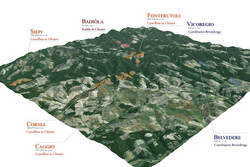 The Mazzei family dates back to the 11th century. They originally came from Florence where they made a living as coopers and artisans. The first documented reference to Chianti as a production region dates back to 1398 between Ser Lapo Mazzei, a notary and connoisseur of wine, and Francesco Datini, a merchant from Prato. In this document, authored by Ser Lapo Mazzei, he paid for six barrels of wine from Chianti. In 1435, Ser Lapo Mazzei’s granddaughter, Madonna Smeralda Mazzei, married Piero di Agnolo da Fonterutoli, and Castello di Fonterutoli became part of the Mazzei family’s estate. For the past 24 generations, the Mazzei family has been producing wines at Castello di Fonterutoli. The Sangiovese grape is the most planted grape variety in Italy, and Tuscany’s largest and best-known Sangiovese-dominant wine region is Chianti. Depending on where the grapes are grown, with climate and soil being a factor, Sangiovese can deliver a wine that is fruit-forward with bright acidity and high tannins or lean towards earthy with herbal notes. It runs the gamut of descriptions, but one of Sangiovese’s trademarks is its dark cherry flavor. Last month I attended a virtual tasting with Giovanni Mazzei who represents the 25th generation of this family-owned winery. He is the export director for Mazzei and the eldest son of Fillippo Mazzei who is one of the managing directors of the estate. Beginning with the 2017 harvest, the Mazzei family introduced a different perspective to express the biodiversity of their Sangiovese-based range of wines. Giovanni guided us through a tasting of the estate’s three Chianti Classico Gran Selezione wines from three different terroirs, with each wine exhibiting its own unique character. In addition, Giovanni shared a soon-to-be-released bottle of Siepi Toscana IGT 2018. Giovanni said, “For the last 50 years, we have been dedicated to research to better understand Sangiovese evolution. We have an articulated estate with so many differences from one location to another. The vineyards range from two meters above sea level to almost 600 meters with different terrain and different climates. You can’t have just one solution for everything. It is a massive puzzle! There is beautiful diversity in this region, with each district exhibiting its own characteristics. Our aim is to reflect the viticulture of the region.” As of 2014, Gran Selezione is a new classification above Riserva for Chianti Classico DOCG. A minimum of 80% Sangiovese estate-grown grapes is required. Grapes must be harvested only from the winery’s own vineyards along with upgraded requirements for alcohol, extract, and a minimum aging of 30 months. Giovanni said, “At the end of the day, the rules aren’t really making the wine. It is the winemakers and how they envision the wine and how it is expressed. Gran Selezione is the best of the best. The quality is phenomenal. Only 6% of Chianti Classico DOCG production has qualified so far for the Gran Selezione level. It is a game-changer!” All vineyard cultivation is entirely manual, including the grape harvest. Badiòla Chianti Classico Gran Selezione DOCG 2017 100% Sangiovese grapes were harvested from the estate’s highest altitude vineyards of 570 meters in the Chianti municipality of Radda. Soil is mainly a mix of Galestro (local lime marl) and sandstone. The average vine age is 16 years. The vines benefit from ventilating winds with lower temperatures than any other estate vineyard. The wine goes through natural fermentation, with no yeast added. It is aged for 24 months in French oak barrels from Burgundy (30% new) and then ages further in the bottle. This is a fresh and elegant wine with lovely aromas of fresh berries, cherry, and spice. The palate offers red fruit, cherry, plum, spice, chalk, and silky tannins. The wine is well integrated with a long finish of sour cherry, spice, and a hint of cocoa. Giovanni said, “I’m a big fan of this wine. It has complexity with austere character, typical from Radda.” Alcohol: 13.5% SRP: $99 Castello Fonterutoli Chianti Classico Gran Selezione DOCG 2017 This is the estate’s flagship wine made from a selection of 11 of the best vineyard plots surrounding the Fonterutoli hamlet in the Chianti municipality of Castellina. The age of vines is between 25 to 30 years. The altitude is 470 meters above sea level with rocky limestone, chalk, and rich skeleton texture. The wine was first produced in 1995 and is a forerunner for Gran Selezione. The 2017 vintage is the first vintage to use 100% Sangiovese. Each plot is individually vinified, and the wine is then aged in Burgundy and Bordeaux barrels for 25 months and then six months in concrete tanks before bottling. This is a wine with structure and elegance. Delicious aromas of wild berries, violet, lavender, cherry, and earth lead the way for an explosion of flavors on the palate. Cherry, dark fruit, vanilla, licorice, spice, and minerality blend with silky tannins. This wine is rich and crisp. Giovanni says, “It is an energetic wine. The juice gives a sense of purity. It is a pure Sangiovese”. Alcohol: 13.5% SRP: $74 Vicoregio 36 Chianti Classico Gran Selezione DOCG 2017 This wine is a blend of 36 different Sangiovese biotypes derived from fifty years of research. The biotypes are planted in a single vineyard at 350 meters above sea level on a sunny plateau of Castelnuovo Berardenga. Soil is clay-rich limestone and fossil matter. Thirty-six individual vinifications take place in French oak barrels, and then the wine is aged for 18 months in French oak barrels (50% new). This is followed by several months in concrete tanks. Seductive aromas of cherries, spice, and floral envelops the nose. The palate is layered with rich and expressive flavors of dark cherry, dark fruit, lavender, spice, herbs, pepper, and earth. Chewy tannins, with lingering spice and dark cherry, add to a long and delicious finish. This is a vibrant and complex wine. Giovanni says, “This wine is the heart beating from Vicoregio.” Alcohol: 13.5% SRP: $99 Siepi Toscana IGT 2018 There is an interesting story attached to this wine. The first vintage was in 1992. It is a 50/50 blend of Sangiovese and Merlot. According to Giovanni, the family fought over how to produce this wine. The older generation wanted it made with mostly Sangiovese, and the younger generation wanted it made with 100% Merlot. A compromise was made, and a 50/50 blend was produced. The grapes are sourced from 10 to 35- year-old vines in the Siepi vineyard that has belonged to the Mazzei family since 1435. The Mazzei family was one of the first producers to plant Merlot in Chianti Classico. Each variety goes through a gentle vinification. 70% of the wines are aged in new French barriques (Merlot: 18 months, Sangiovese: 16 months), and then they are blended and aged an additional four months in steel tanks. The wine is bottle-aged for four months before release. This wine opens with aromas of dark fruit, cherries, berries ,and subtle notes of spice, cocoa, and herbs. The palate is an infusion of delightful layers of dark cherry, dark berries, spice, hints of plum, vanilla, and toast. Silky tannins add to this rich and complex wine. Giovanni says, “This wine is very approachable and has great drinkability.” Alcohol: 14.5% SRP: $130 Although I was thousands of miles away from Tuscany, it was exciting to take a virtual trip through all of the vineyards with Giovanni. The character and uniqueness of each municipality were beautifully captured in each bottle of wine. For a brief moment in time, my palate enjoyed “traversing through the terroirs of Castello di Fonterutoli”. Until next time…
Cheers! Penina To leave a comment or if you have an inquiry, please contact me at [email protected] Nestled in the gently rolling hills of Tuscany in the heart of the Chianti Classico zone lies the family-run estate of Rocca delle Macìe. The late Italo Zingarelli, a well-known actor who was also at age 28 the youngest movie producer in Italy, decided to pursue his true passion and lifelong dream of producing wine. His youngest son, Sergio said, “It was my father’s dream to have a winery.” In 1973 that dream was realized with the purchase of the “Le Macìe” estate. At the time Italo acquired it, only two acres out of 230 acres were under vine. The 14th-century farmstead was in disrepair along with acres of neglected vines. Working together, Italo and Sergio replanted the vineyards and restored the farmstead. More property was purchased and a state-of-the-art cellar was built and modern winemaking equipment was installed. Today, the family has six estates throughout Tuscany comprised of 1500 acres with a total of more than 500 acres under vine and 54 acres of olive groves. Le Macìe, Sant’Alfonso, Fizzano and Le Tavolelle estates are located in the Chianti Classico area. And Campomaccione and Casa Maria estates are located in the Morellino di Scansano area (Maremma). Italo instilled his love and passion for wine and the Tuscan land in his three children, Sergio, Fabio and Sandra. Sergio is quoted as saying, “My father Italo managed to infuse us with his great passion for the Tuscan soil and for the art of making wine. In short, he gave us the desire and the enthusiasm to continue to write that never-ending story that links wine to the lives of human beings. With his cast-iron will, he taught me that to get an idea off the ground takes determination...” In 1984 Sergio assumed responsibility for estate’s worldwide distribution and in 1989 he was appointed Company President. Sergio’s wife, Daniela works with him in running the business. Sergio has been a member of the Executive Board of the Chianti Classico Consortium since 1995 and in 2012 he was appointed President. In 2015 he was confirmed for another three years. I had the pleasure of spending an afternoon with Sergio a few months ago at a winemaker luncheon for a vertical tasting of six Rocca delle Macie’s historic cru wines made exclusively with grapes grown in their Fizzano estate vineyard. Fizzano Farm was purchased in 1984 and spans across 150 acres with 88 acres under vine. The grape varieties grown here are the iconic Sangiovese as well as Merlot and Cabernet Sauvignon. Miocene deposits with a sandy-loamy texture and pebbly soils make up the soil composition. The vineyards have an excellent southern exposure at 985-623 feet above sea level and the mild Mediterranean climate contributes to maintaining the balance of the grapes acidity, sugar and aromas. Our vertical tasting began with three library wines. Library wines are portions of a vintage that have been set aside in the vintner’s cellar as part of their private stock to be enjoyed at a later date. It is not uncommon to store a few cases from each vintage. This area of the cellar is referred to as “the library”. Chianti Classico DOCG Riserva di Fizzano 1995, 1999 and 2005 are made with 85% Sangiovese, 10% Cabernet Sauvignon and 5% Merlot. They are library wines that still make a statement. The 1995 vintage still exhibits tannins along with soft, red dried fruit and earth. The 1999 vintage is rich with plum, blackberries and hints of cherry. The 2005 vintage is remarkably ripe with red berries, spice and hints of espresso. Chianti Classico Gran Selezione DOCG Riserva di Fizzano 2011 is a blend of 95% Sangiovese and 5% Merlot. Gran Selezione is a new classification above Riserva for Chianti Classico DOCG as of 2014. Grapes must be harvested only from the winery’s vineyards along with upgraded requirements for alcohol, extract and a minimum aging of 30 months. The 2011 vintage is quite aromatic with a palate of ripe dark berries, dark cherry, spice and refined tannins. SRP: $39.99 Chianti Classico Gran Selezione DOCG Riserva di Fizzano 2013 is a blend of 95% Sangiovese and 5% Merlot. Dark berries, plum, spice, dark cherry, clove and a touch of chocolate grace the palate. SRP: $39.99 Chianti Classico Gran Selezione DOCG Riserva di Fizzano 2015 The blend for this wine is 93% Sangiovese and 7% Colorino. Although Colorino is used primarily to add color to the wine, the grape has elevated tannin levels that can contribute to the complexity of the wine. This wine is very aromatic with lush berries and spice. The palate offers rich, ripe red berries, plum, cherry, spice, anise and vanilla. I look forward to tasting this wine again in a few years SRP: $39.99 In addition to the vertical tasting, we sampled four more wines that made my palate quite happy. Chianti Classico DOCG 2017 is a blend of 95% Sangiovese and 5% Merlot. Aged eight months in the barrel. The palate offers fresh ripe fruit, berries, dark cherry, soft tannins and a hint of herbs. SRP: $16.99
Chianti Classico Riserva DOCG 2016 is a blend of 90% Sangiovese, 5% Colorino and 5% Cabernet Sauvignon. Aged two years in French oak. Ripe dark berries, spice, anise, soft tannins and a touch of herbs. SRP: $26.99 Chianti Classico Gran Selezione DOCG Sergio Zingarelli 2013 is a blend of 90% Sangiovese and 10% Colorino. The best grapes are sourced from Le Terrazze Vineyard. The wine is aged for 18 months in French oak. Vibrant aromas of floral, dark fruit, toast and earth lead to a palate of berries, plum, cherry, spice, pomegranate, anise and dark coffee beans. Smooth tannins and beautifully structured. SRP: $99.99 Chianti Classico Gran Selezione DOCG Sergio Zingarelli 2014 is 100% Sangiovese. The best grapes are sourced from Le Terrazze Vineyard. It is aged for 20-24 months in French oak. This wine has a rich palate of plum, blackberry, raspberries, cherry, juicy tannins and spice. It is beautifully balanced and elegant. I asked Sergio if climate change has affected the vineyards and if so is there a difference in the wines produced. Sergio replied, “Climate changes didn't affect our vineyards but mostly the way to manage them. Our vineyard manager, of course, needs to spend more attention on the long-term forecast in order to avoid any negative influences on the canopy and of course on the grapes. Fortunately, we have now to our disposal new and more accurate technical equipment that can be used to predict and to control the balance between the growth of the vines and the quality of the grapes. Of course, the wines change if we have a hot and dry harvest or a colder one, but we are trying to keep the same style and philosophy every year.” Sergio talked about his biggest challenge in the vineyards. “We work very hard since the year 2000 to reduce or not use any chemical treatments. We can make this possible using different weather stations, with very hard work in the vineyard and using different viticulture strategies. As per example, the use of "mating disruption" to confuse some different insects with pheromones in the vineyards; the use of antagonists of some insects to control others one. Another challenge is to not use any chemical herbicides since 2000, using only mechanical removal of the herbs under the vines; maintain as best we can a stable balance in the vigor and quality of grapes ratio using only organic fertilizers and a very specific program of cover crops serving as the specific goals and nature of the soils of the different vineyards.” It was a great afternoon of exploring and tasting this impressive lineup of Rocca delle Macìe wines. All of the wines that we tasted are beautifully crafted. And as Sergio said, “The wines must be elegant and give expressions of the vineyard”. Sergio has done just that! Until next time… Cheers! Penina To leave a comment or if you have an inquiry, please contact me at [email protected] |
Categories
All
|

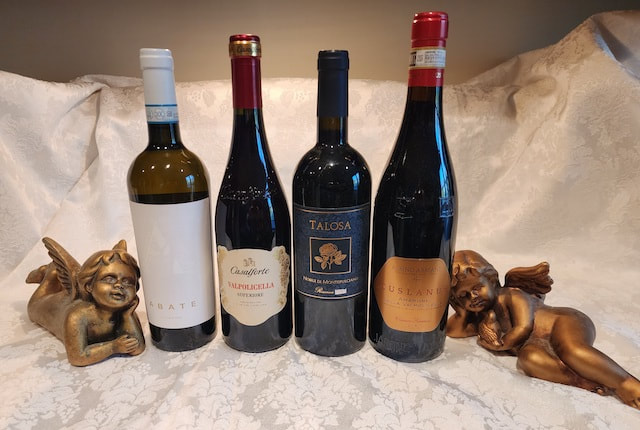
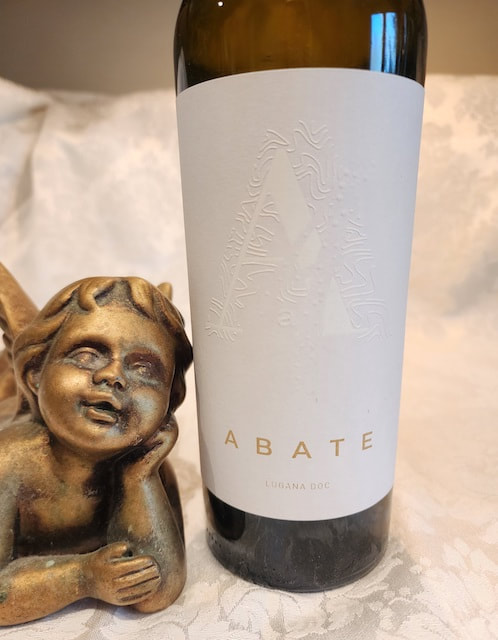
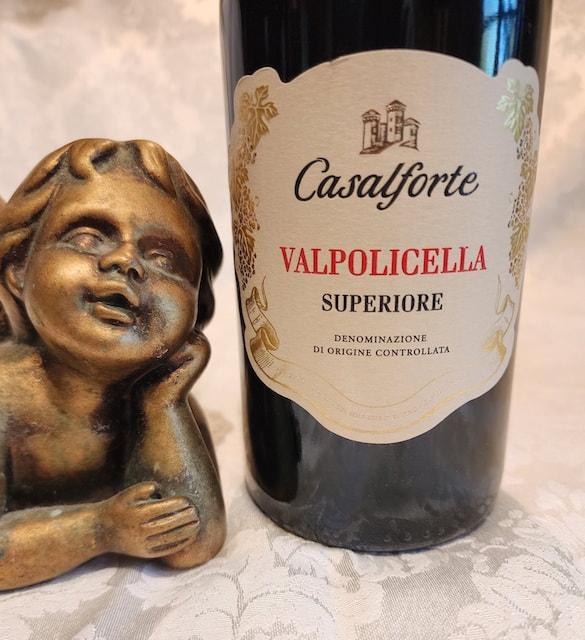
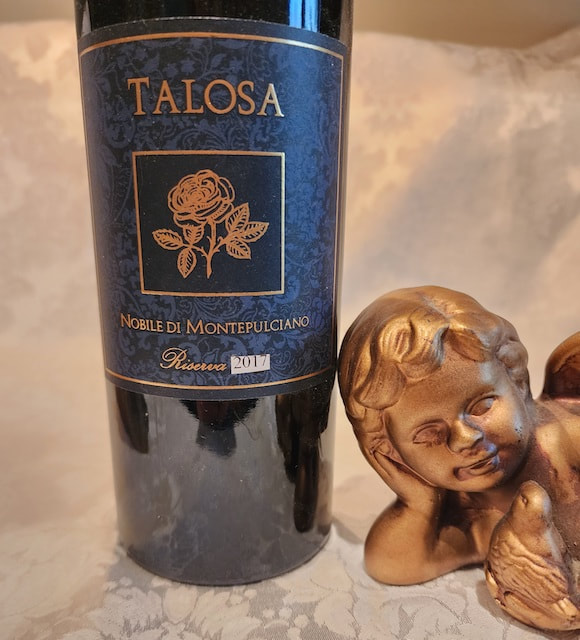
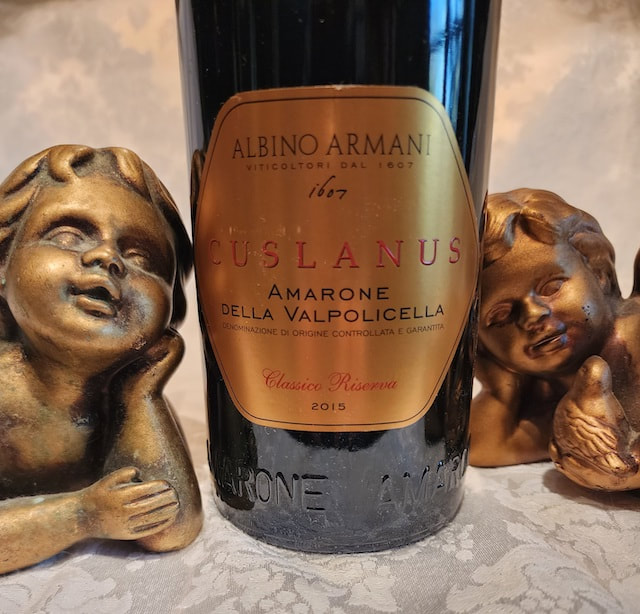
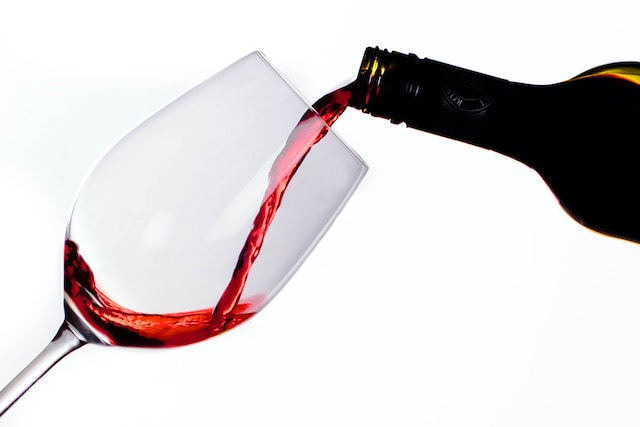

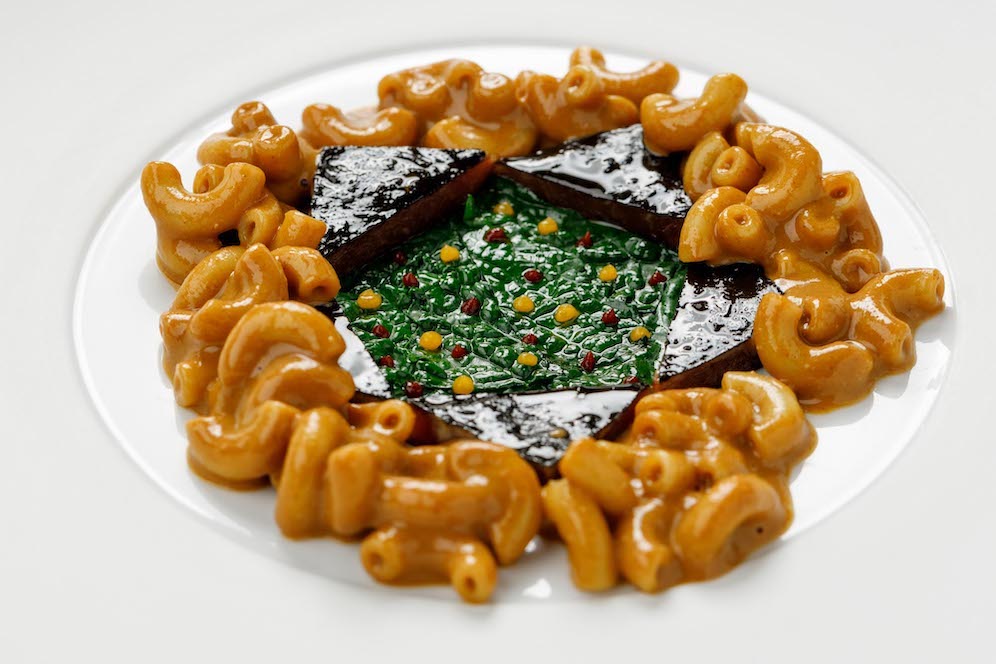
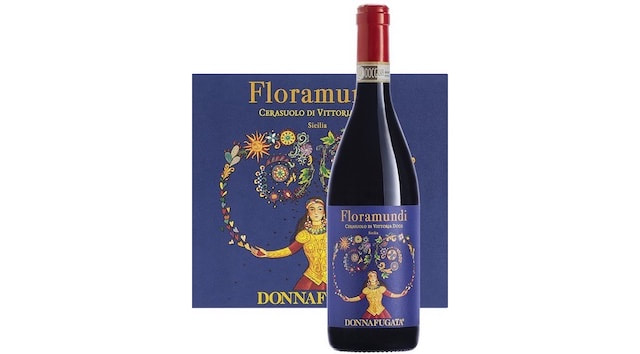
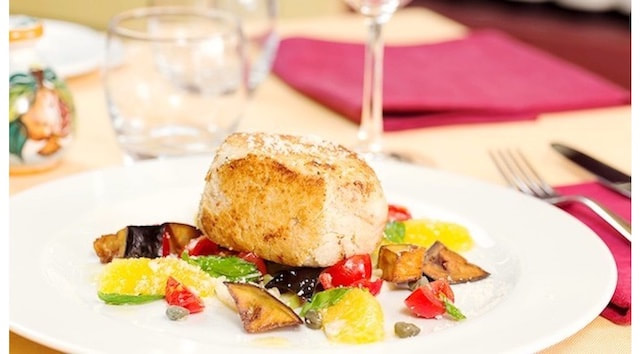
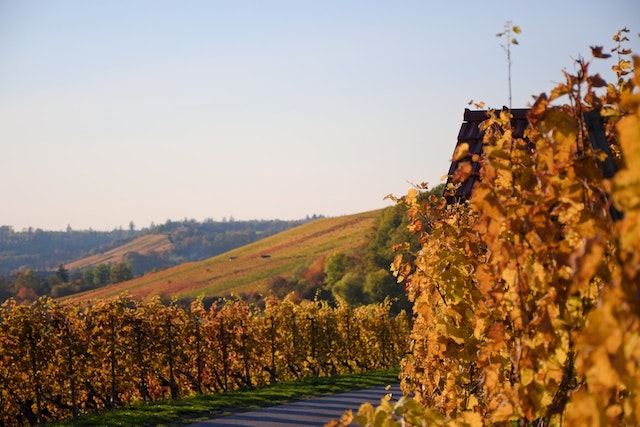
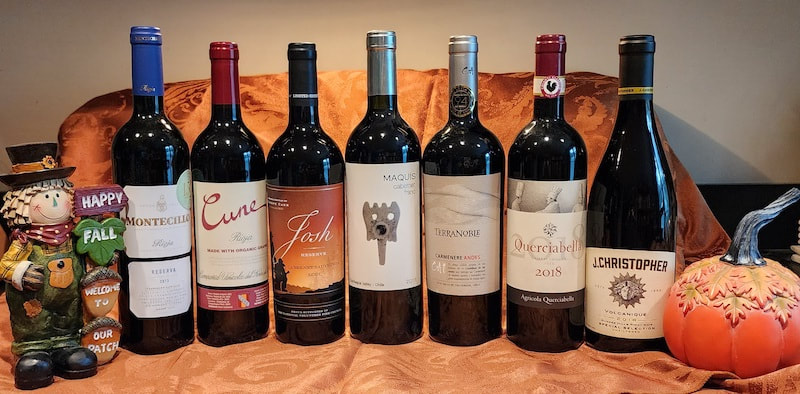
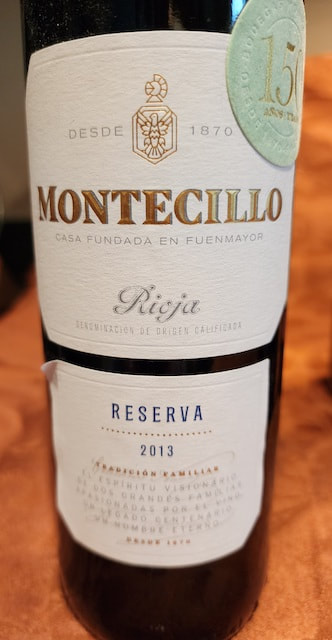
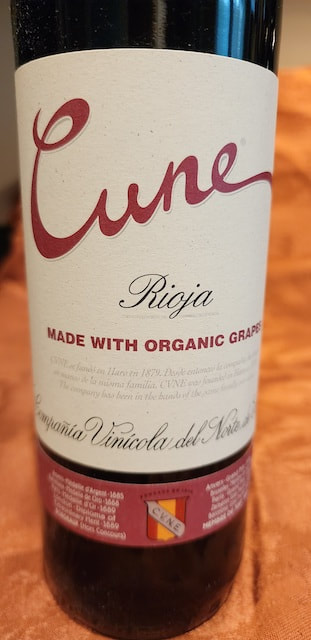
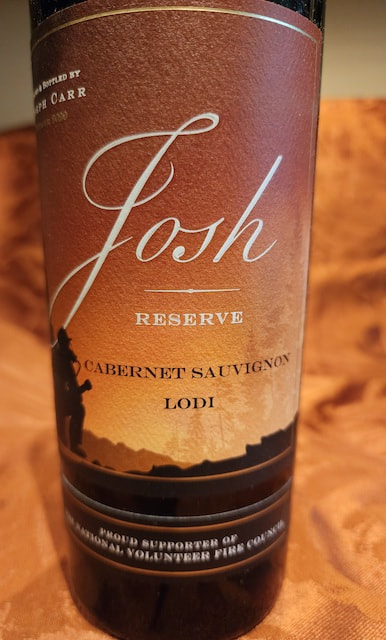
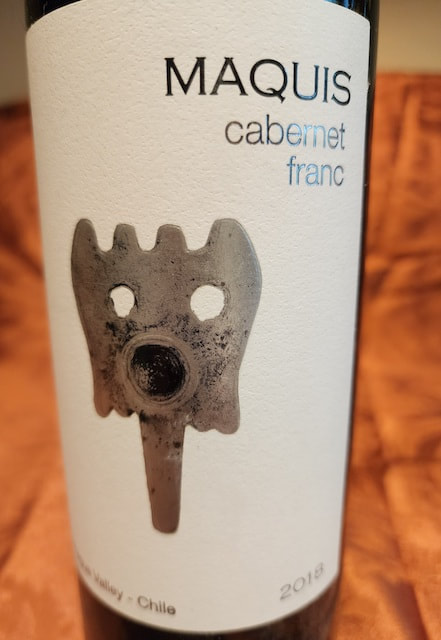
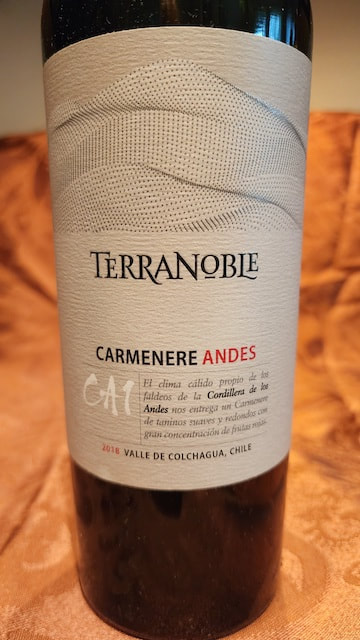
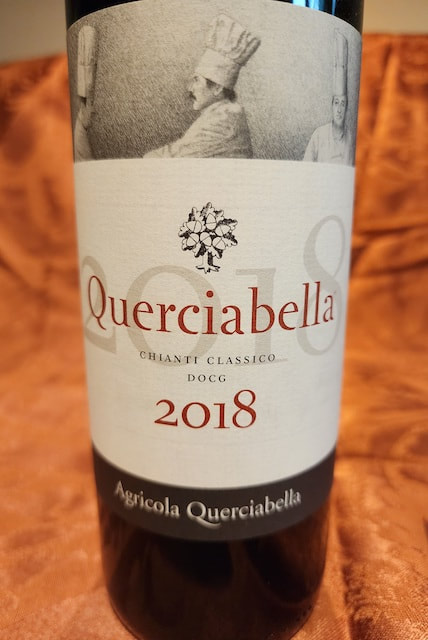
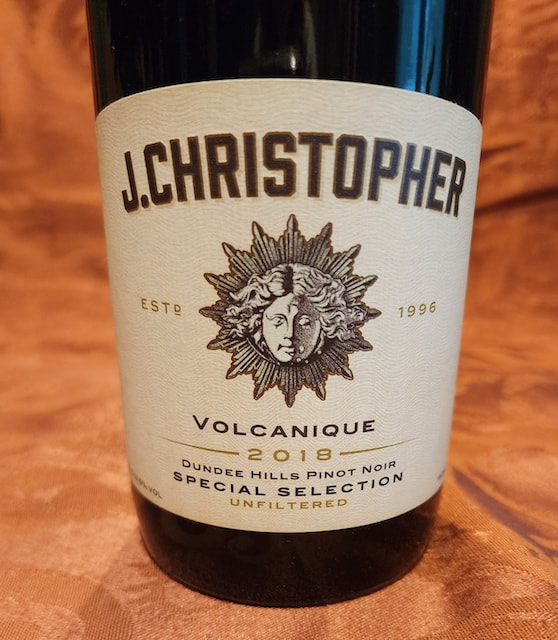
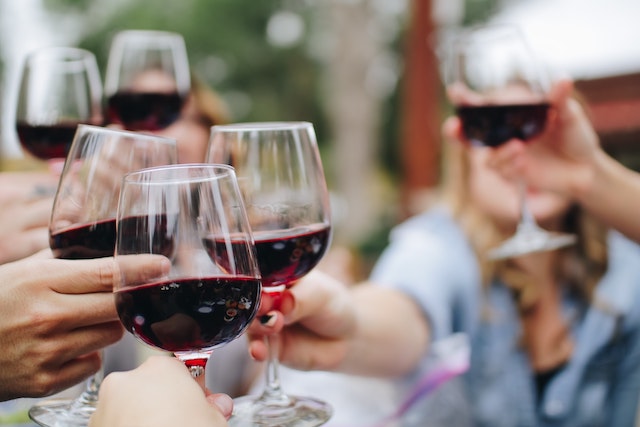
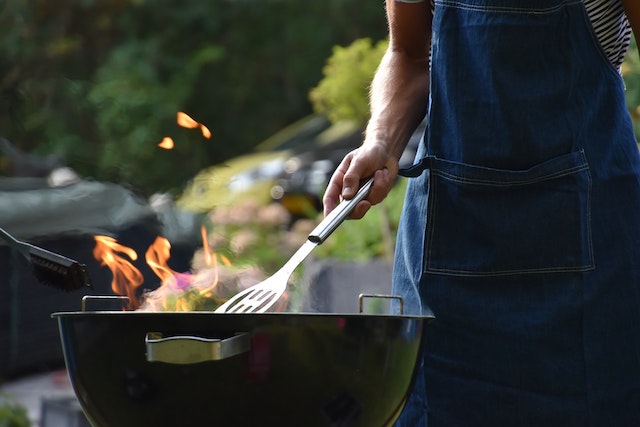
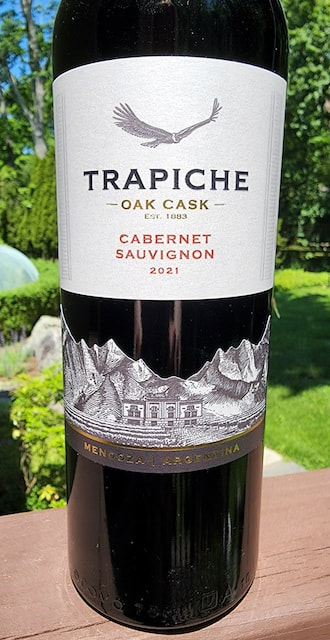
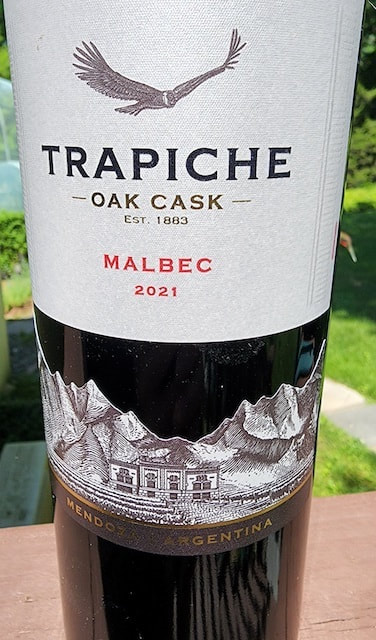
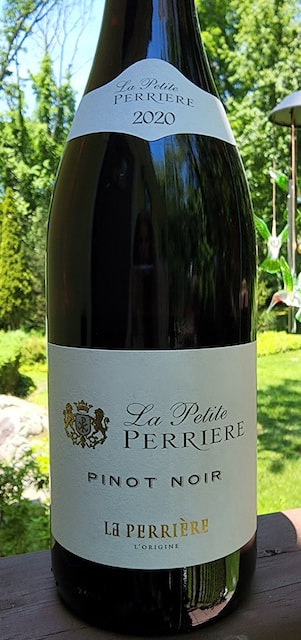
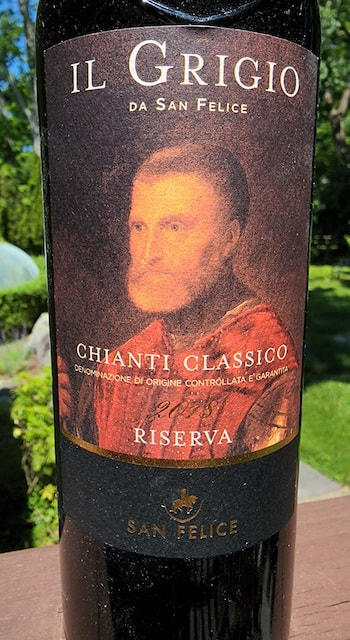
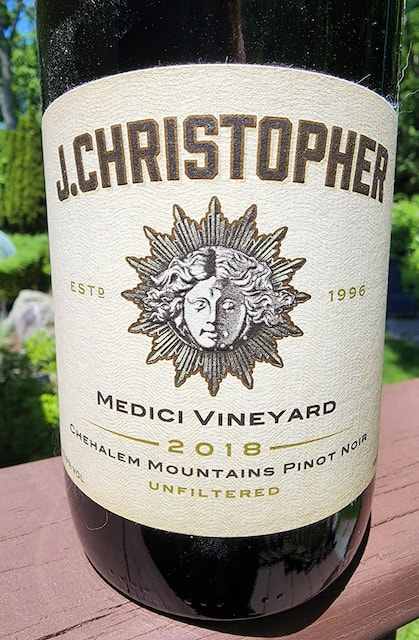
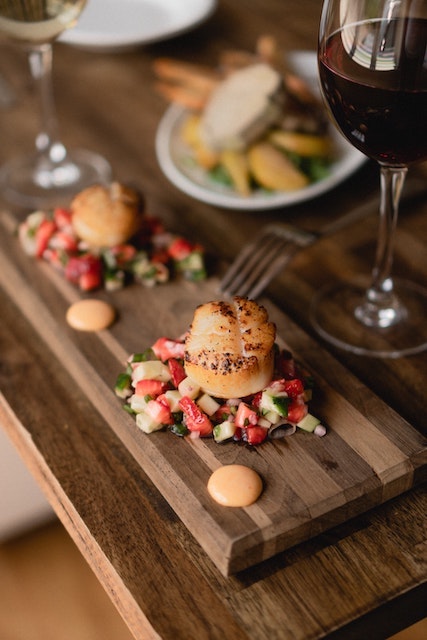
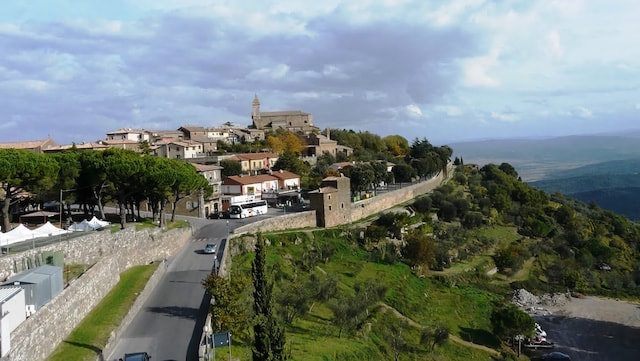
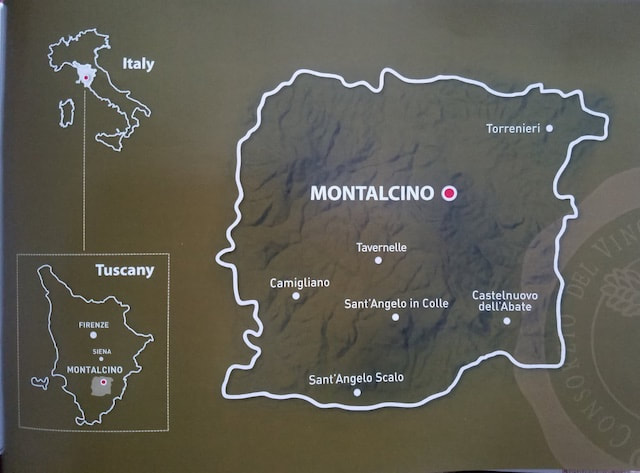
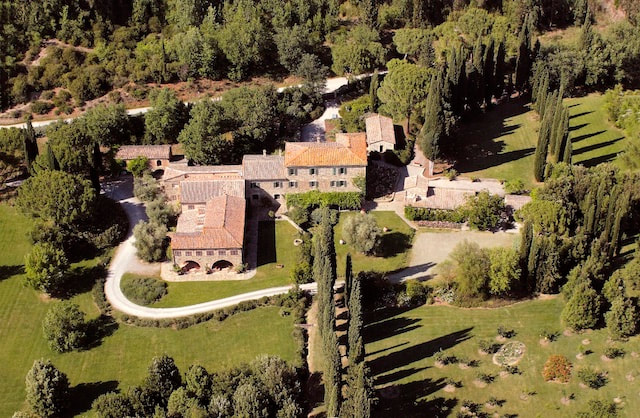
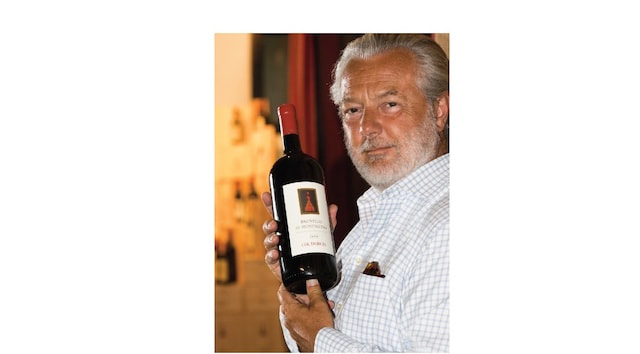
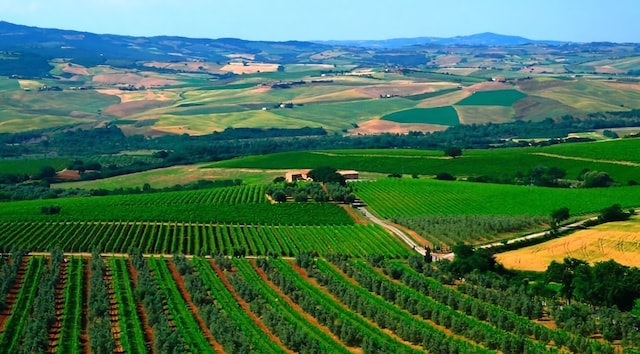
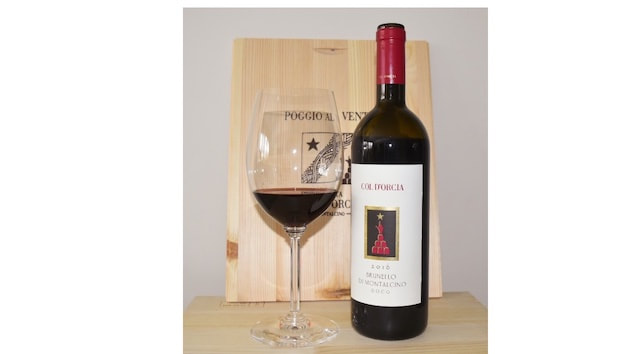
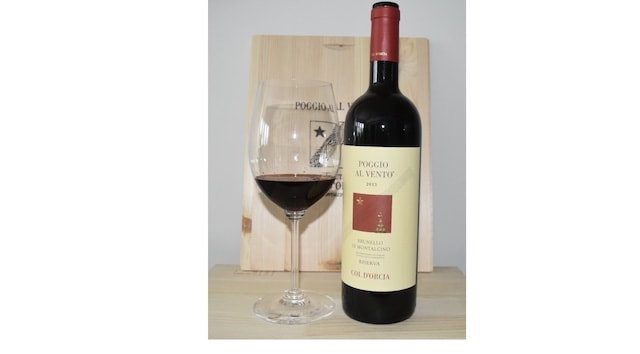
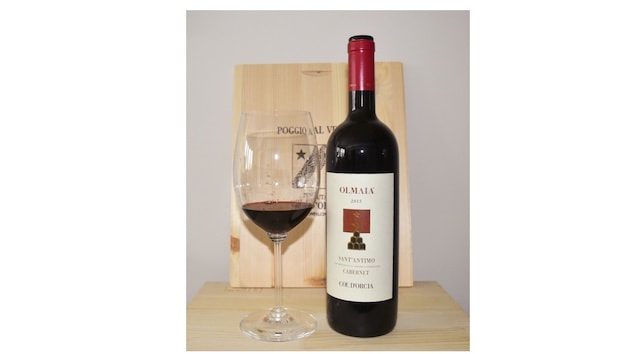
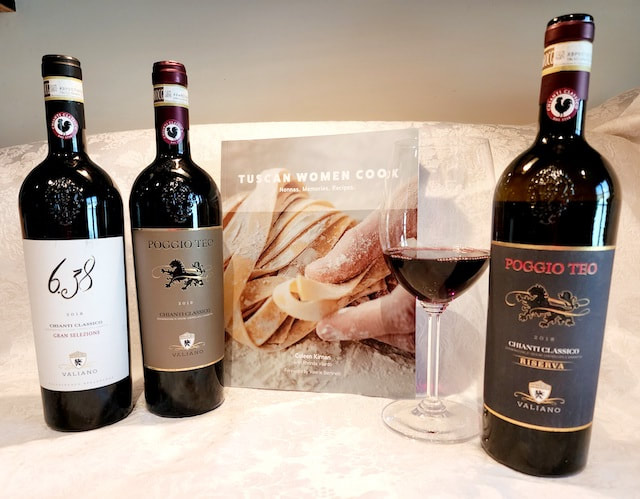
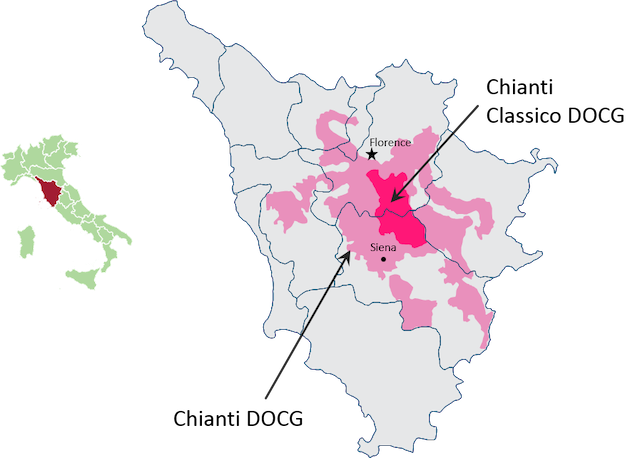
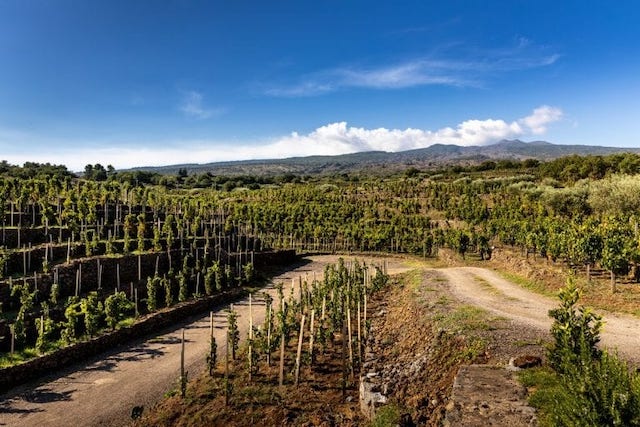
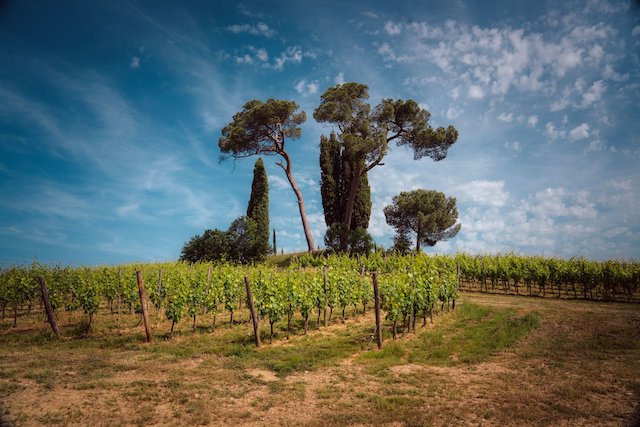
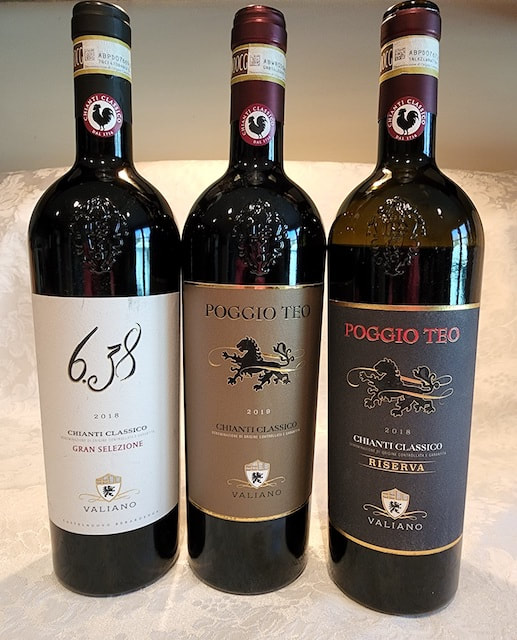
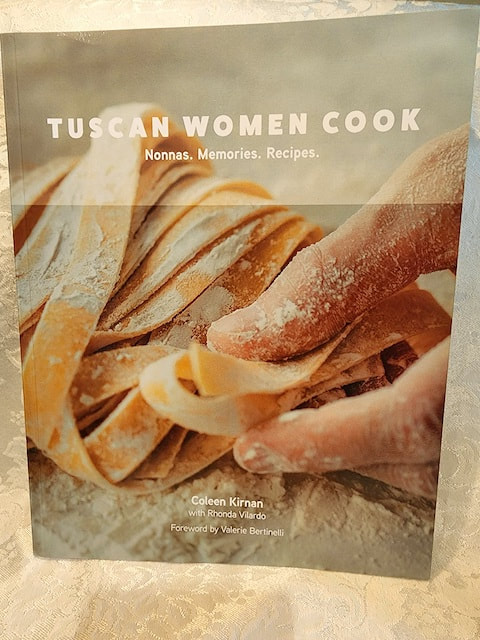
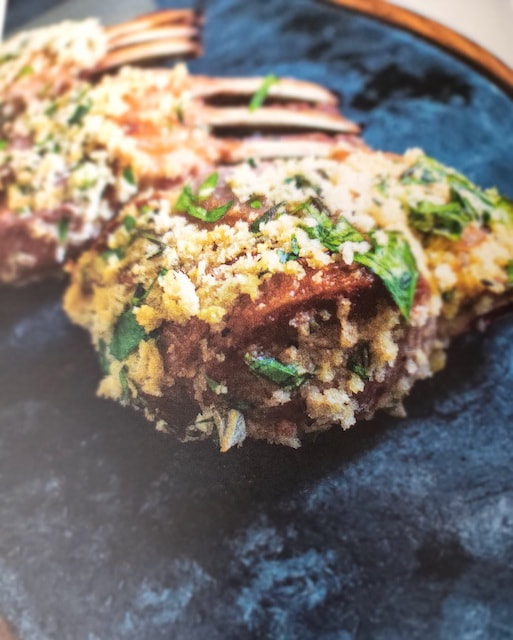
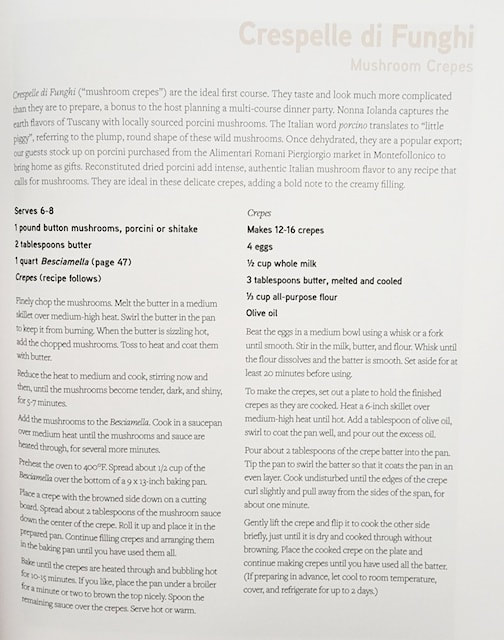
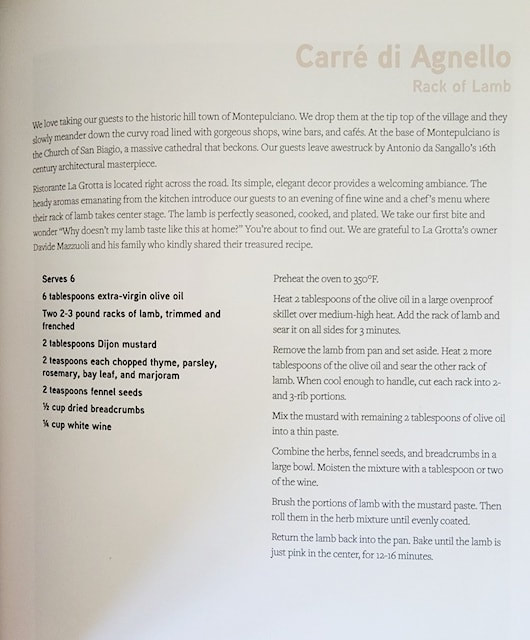
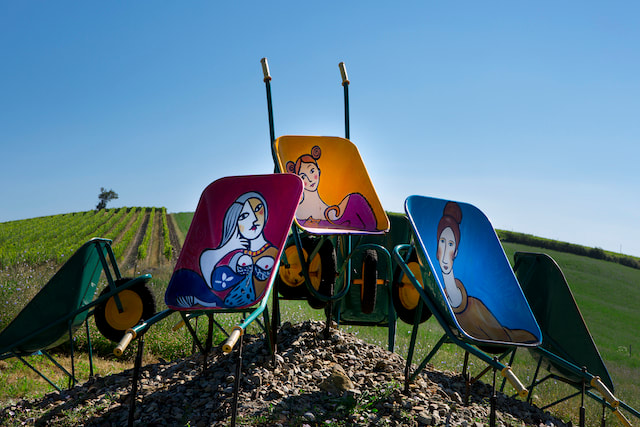
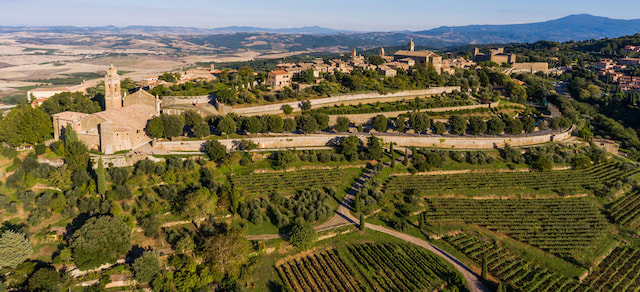
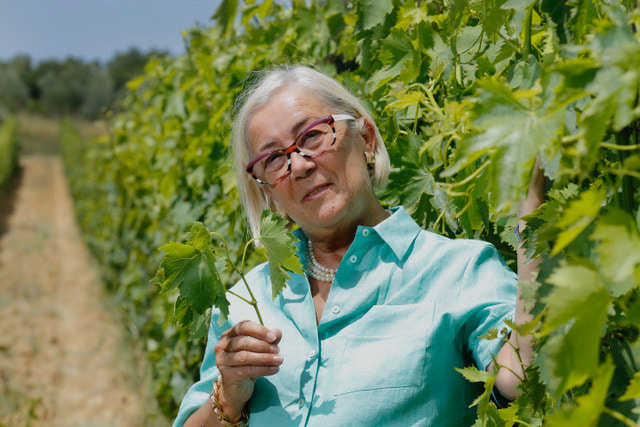
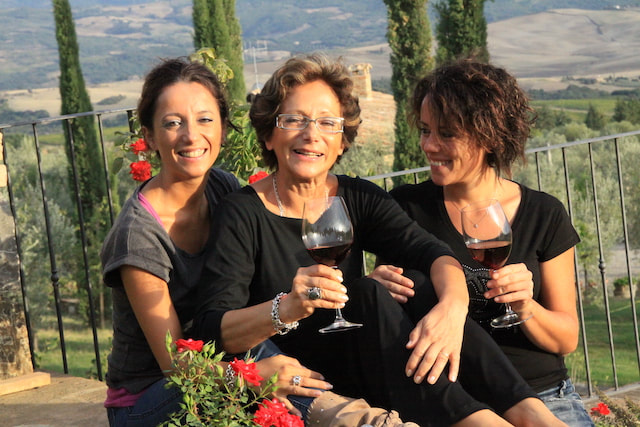
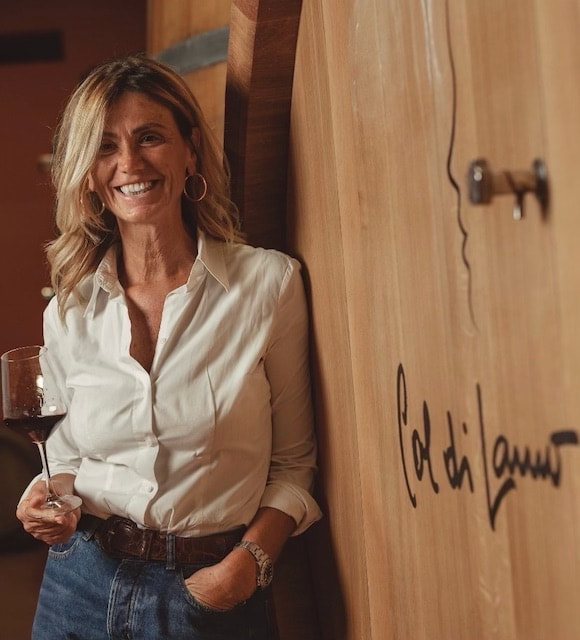
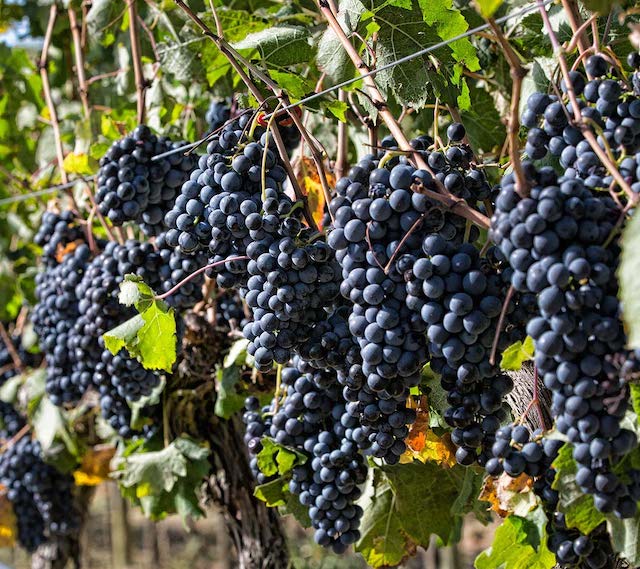
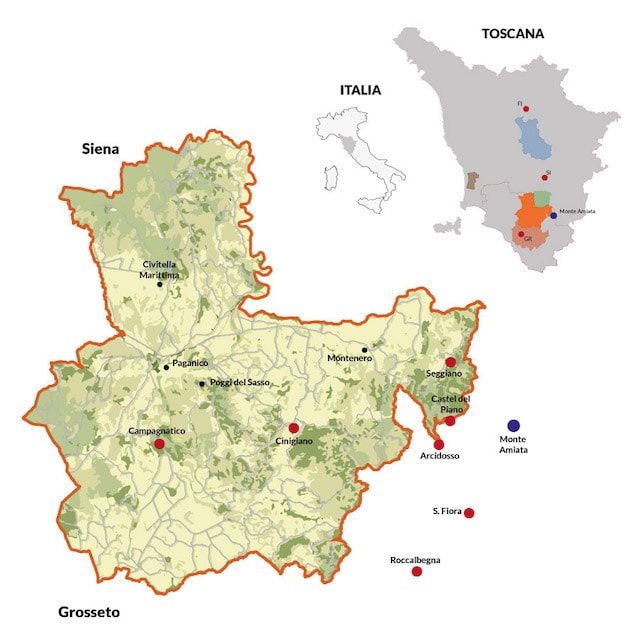
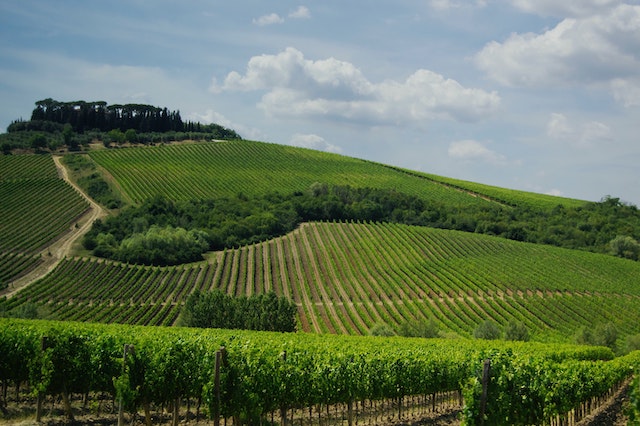
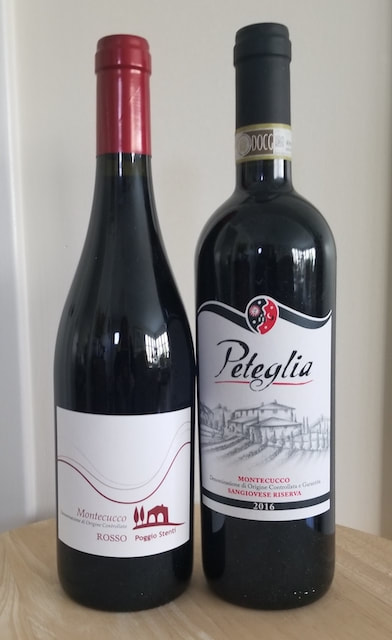
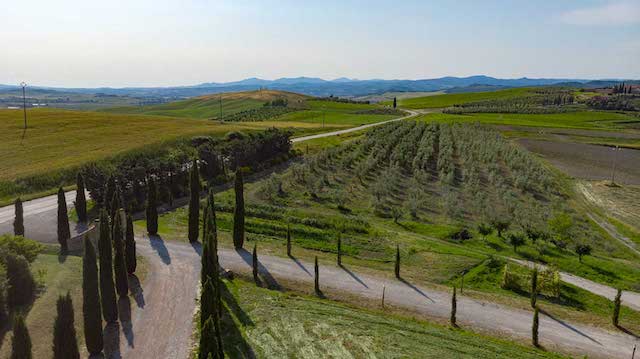
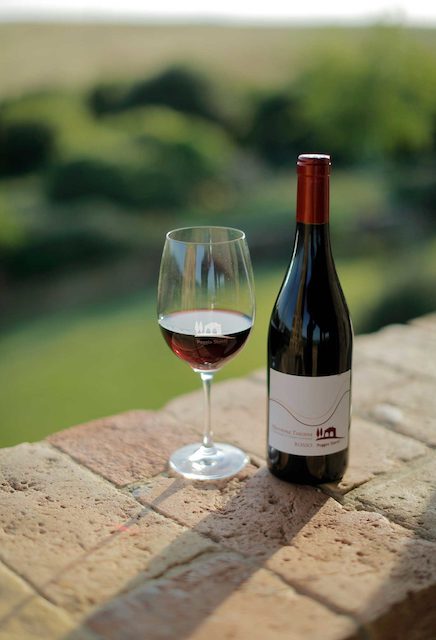
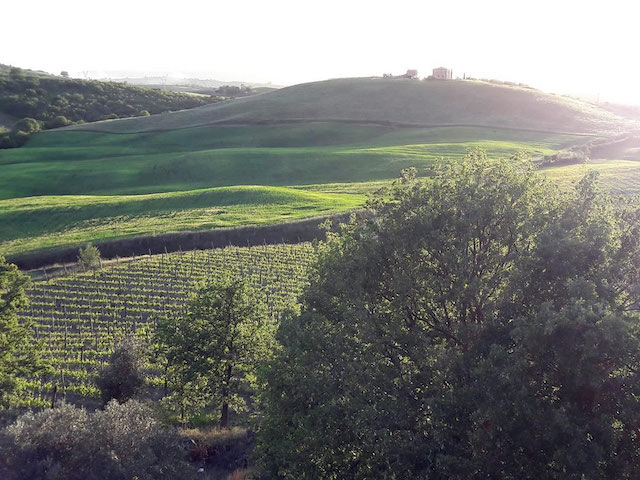
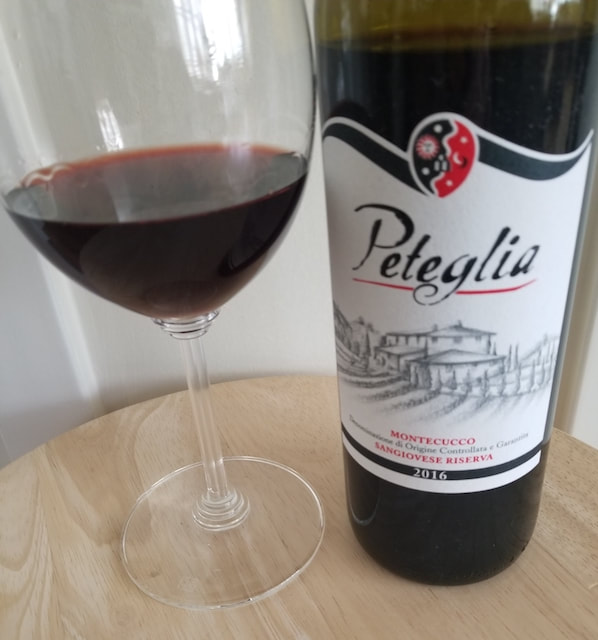
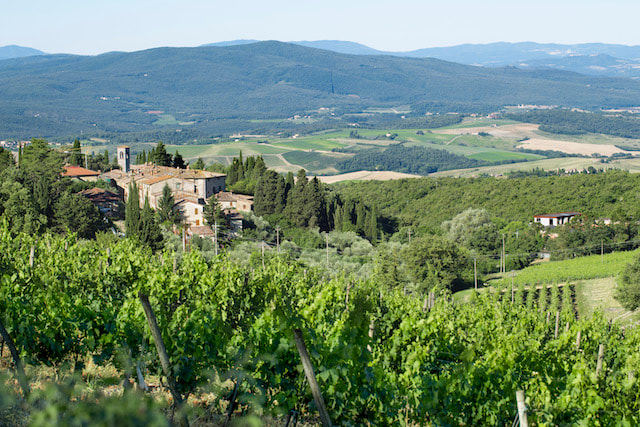
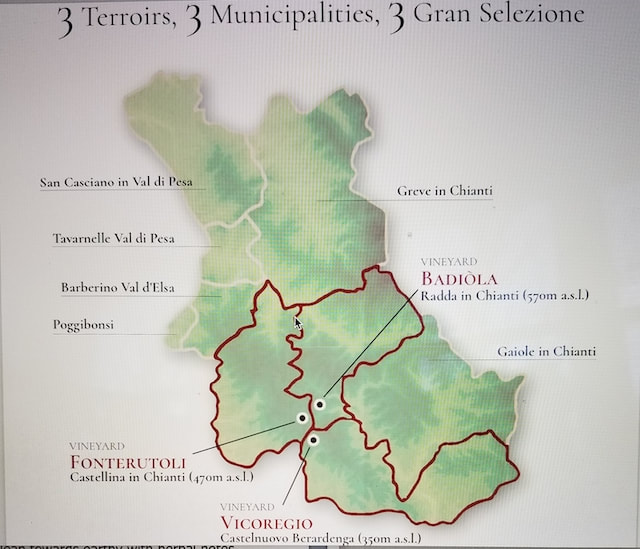
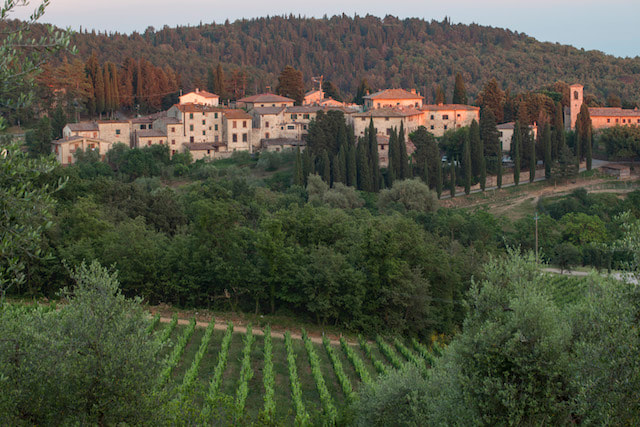
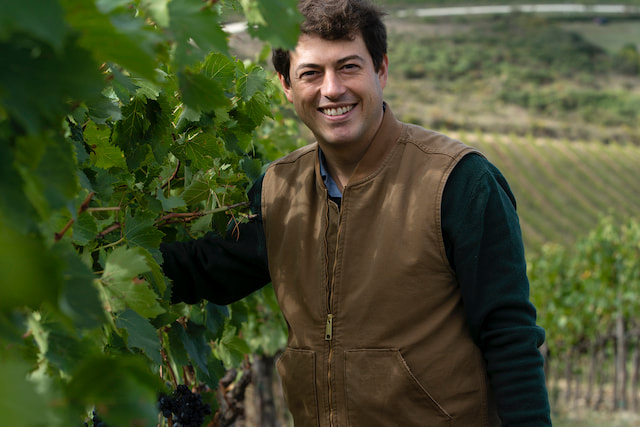
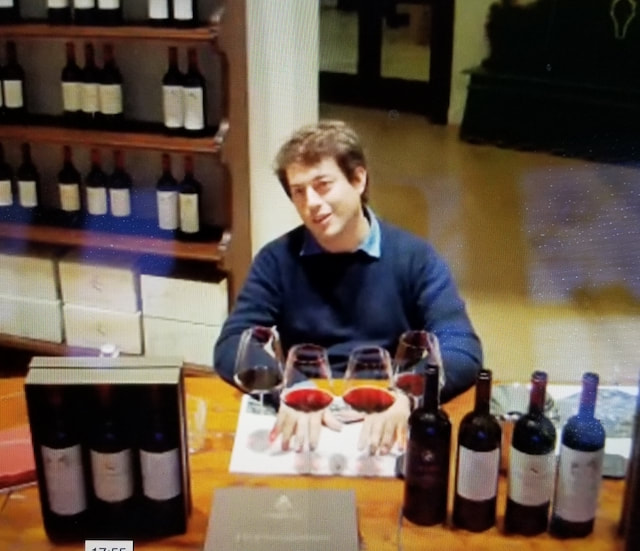
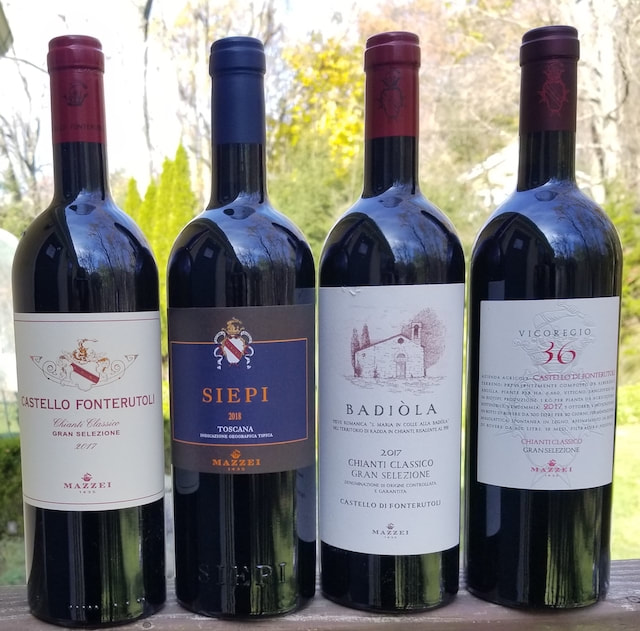
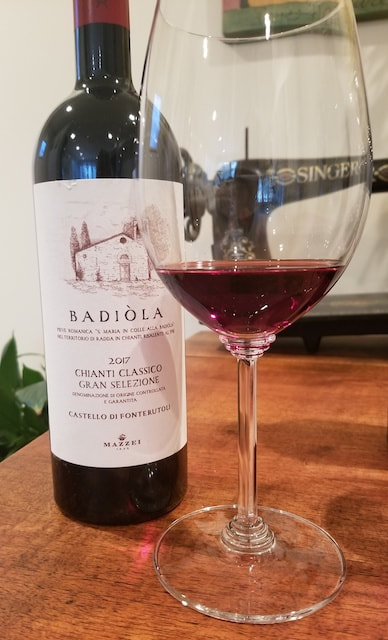
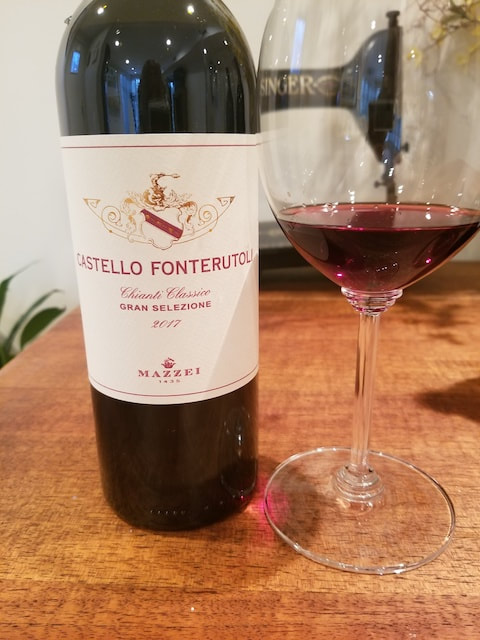
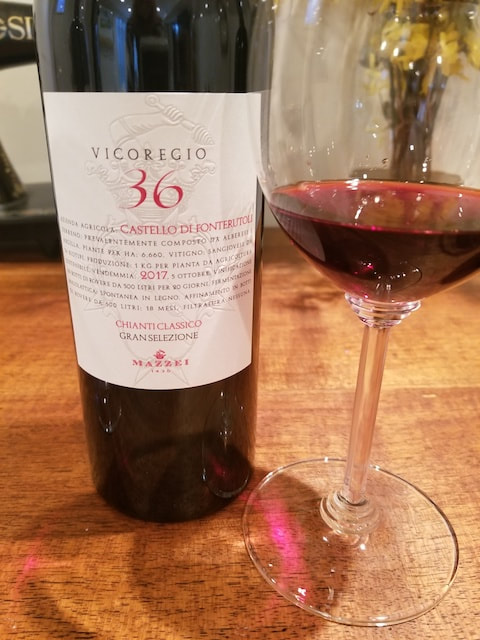
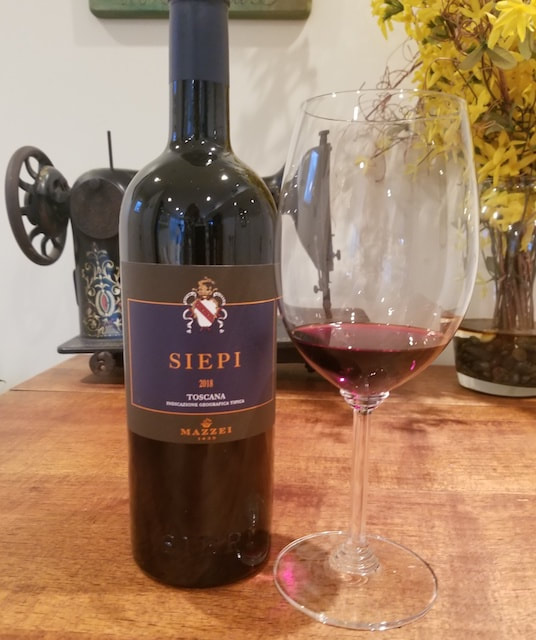

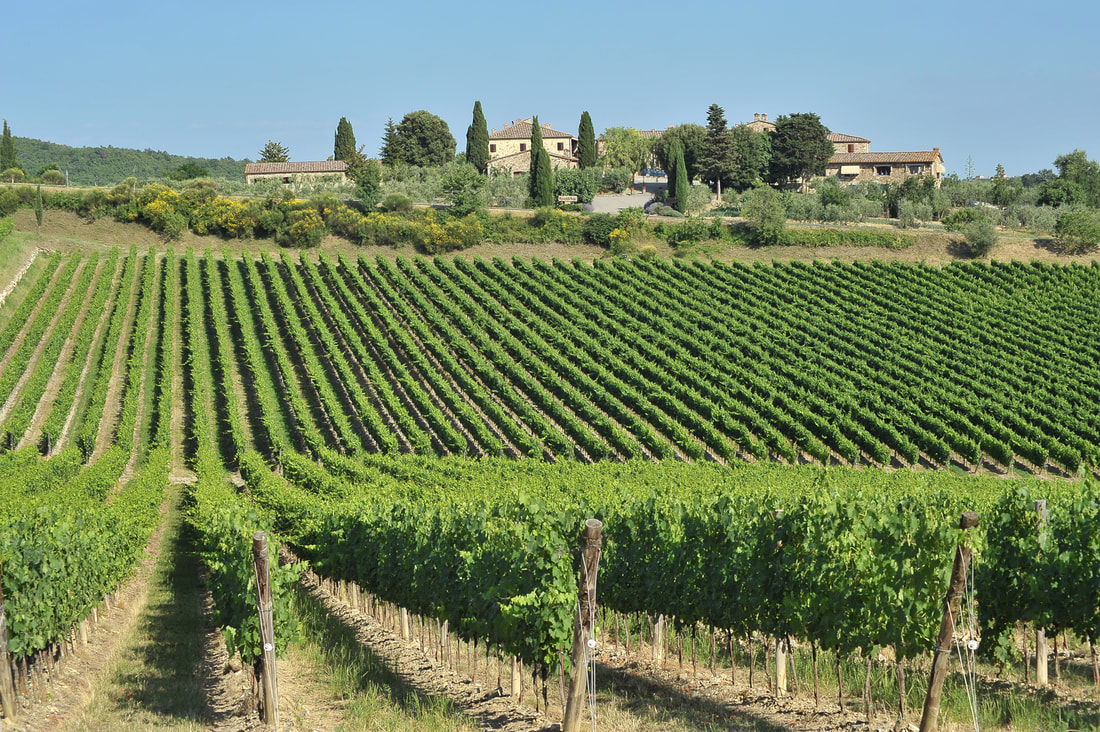
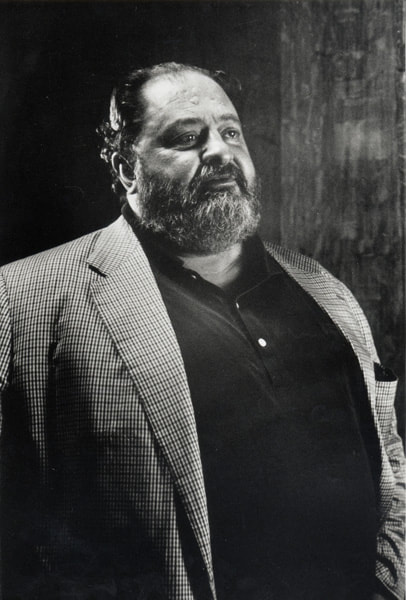
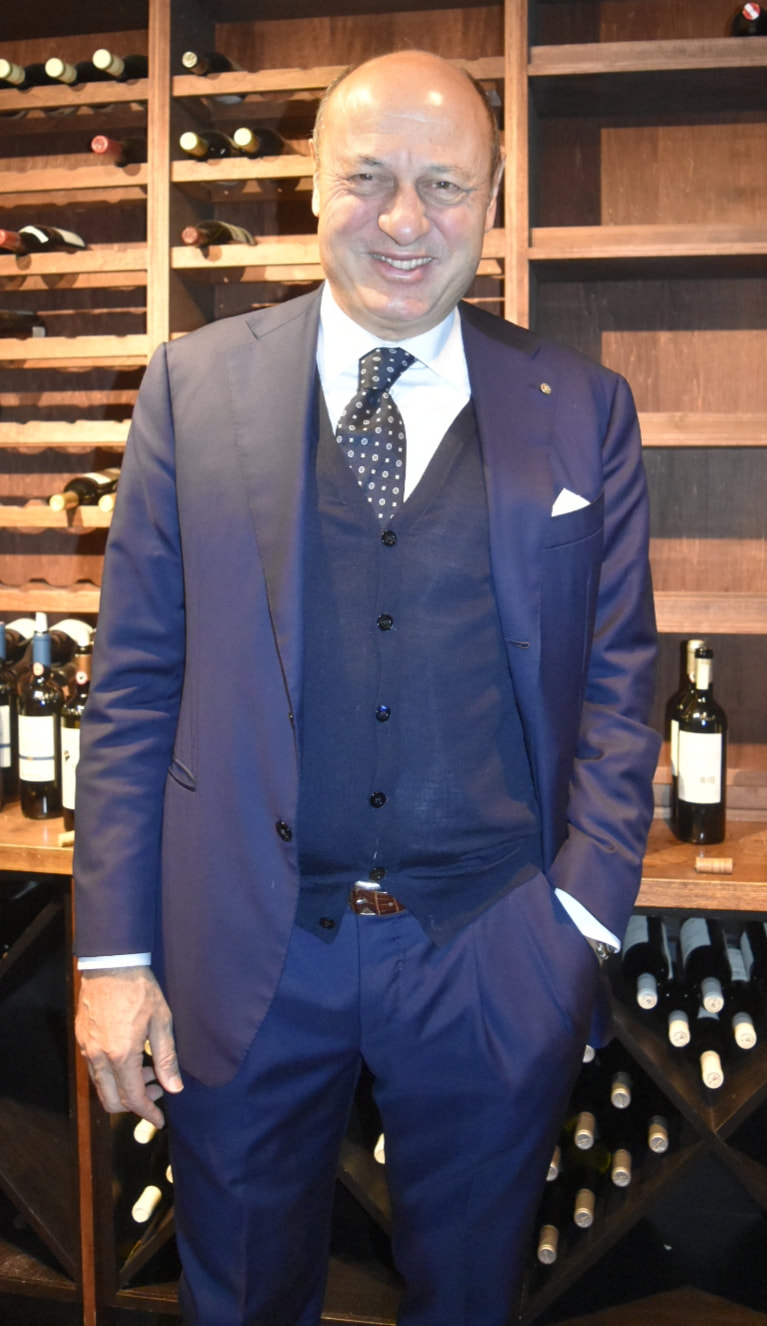
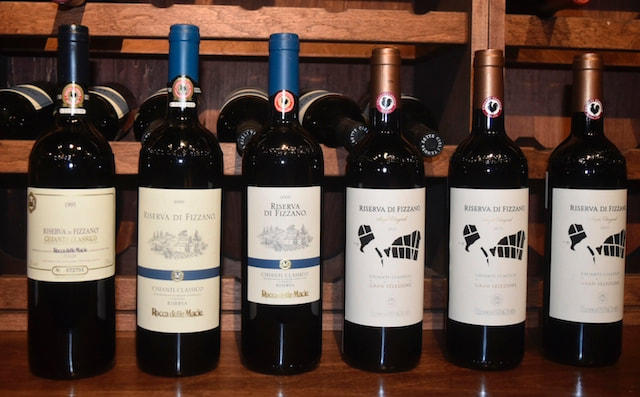
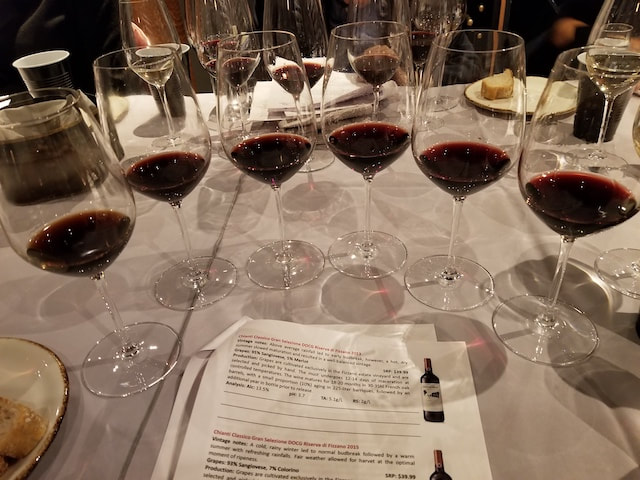
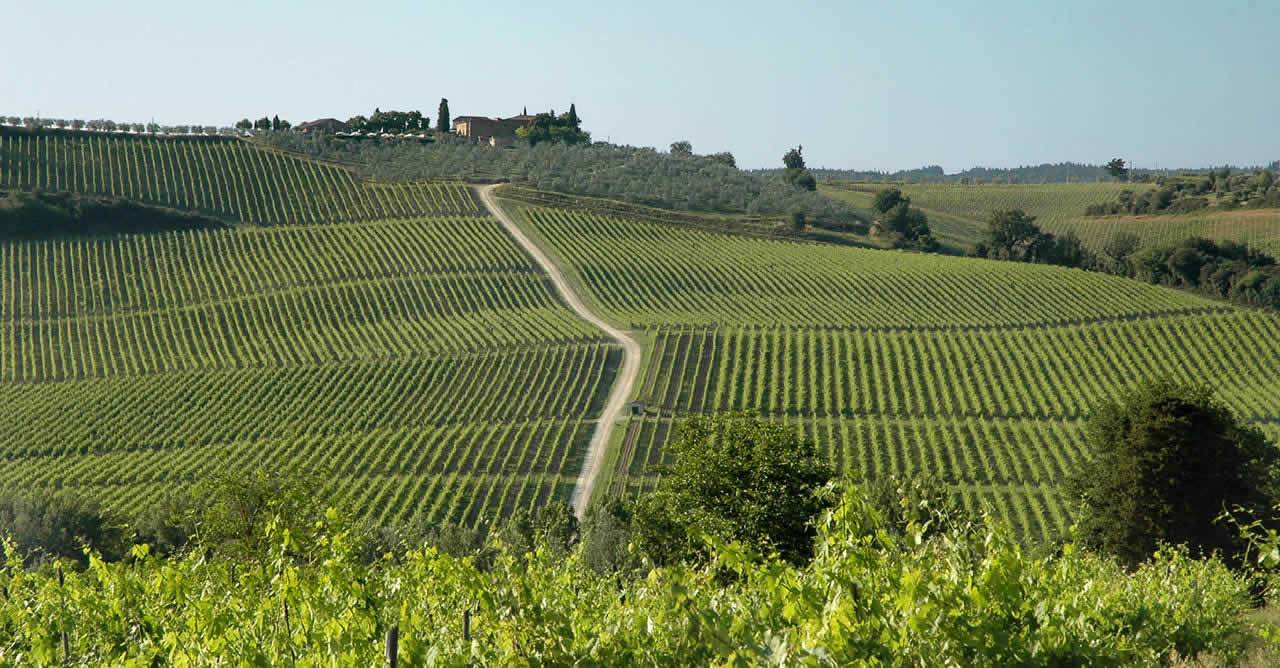
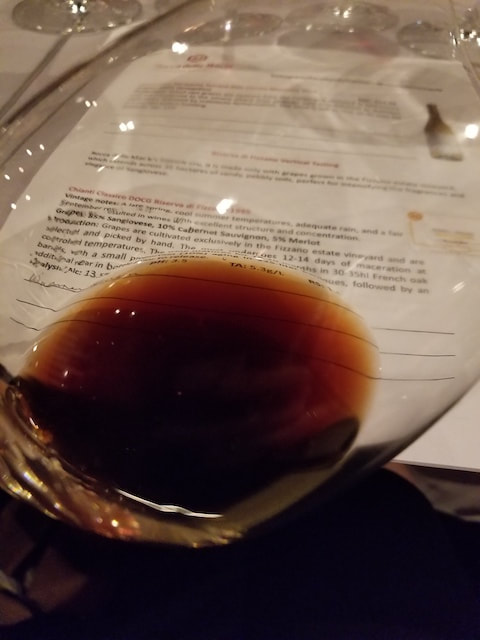
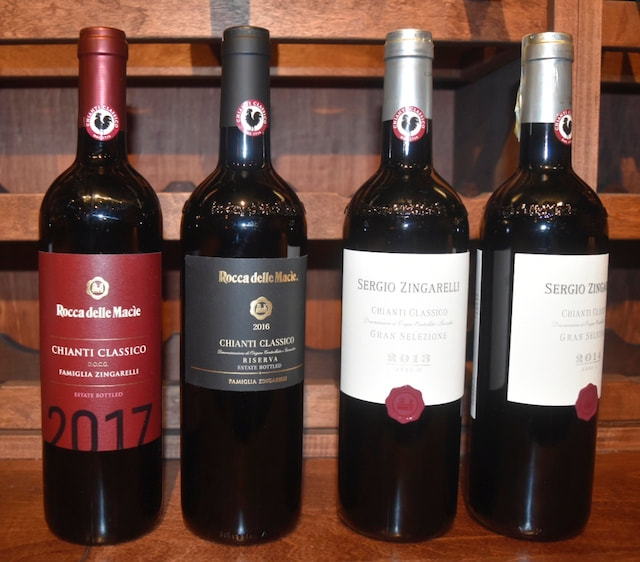
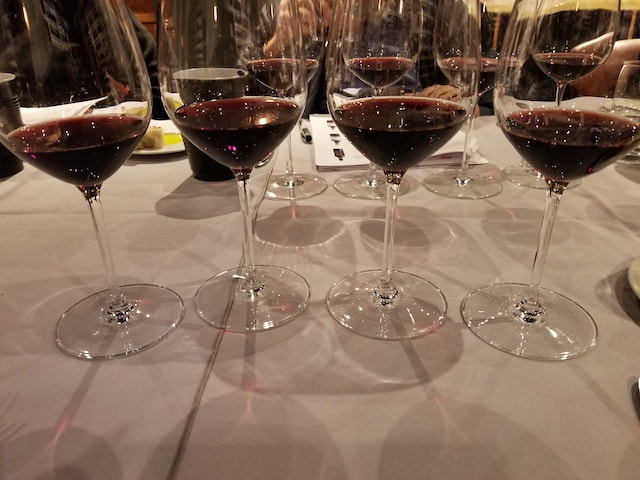
 RSS Feed
RSS Feed